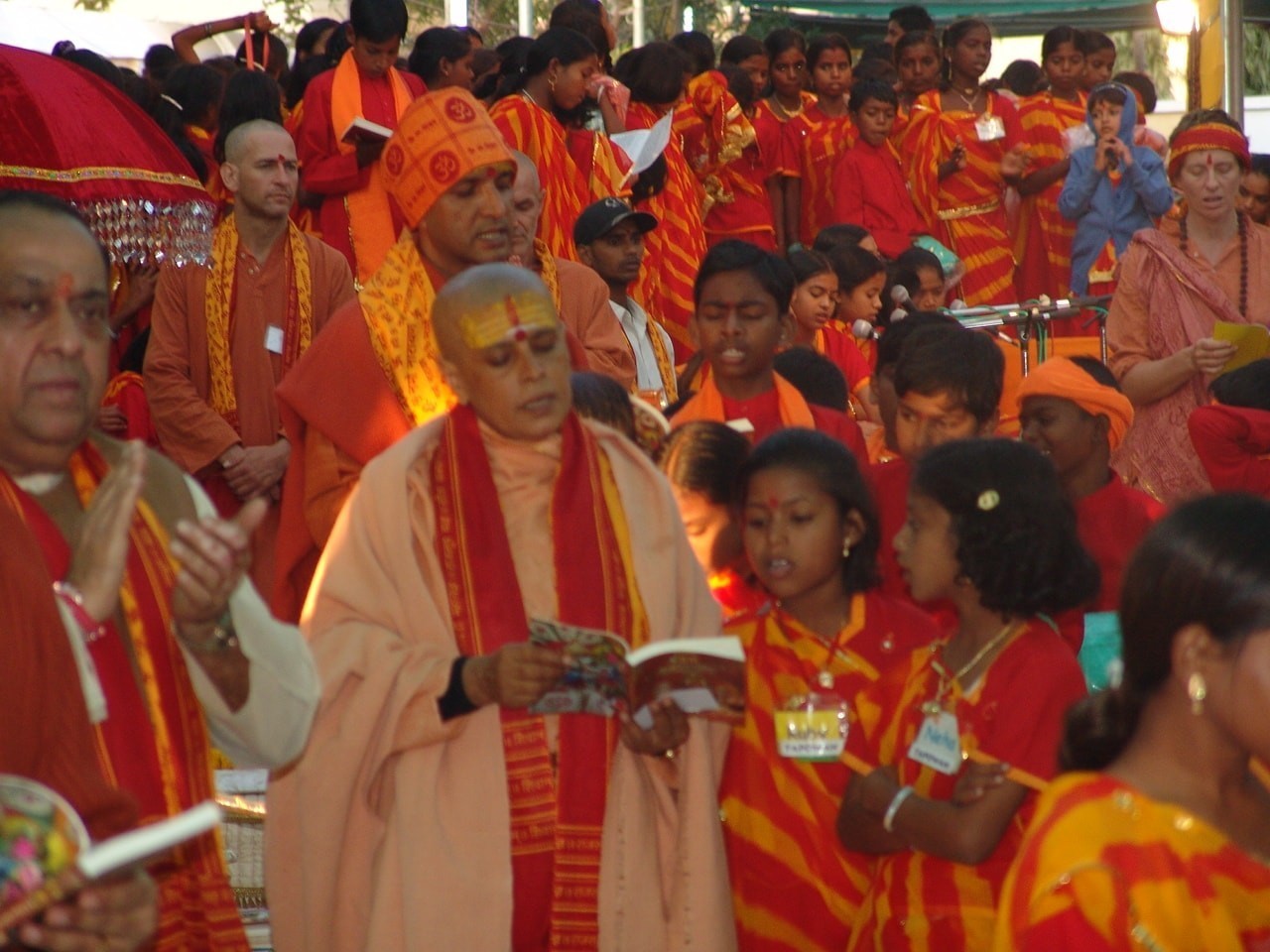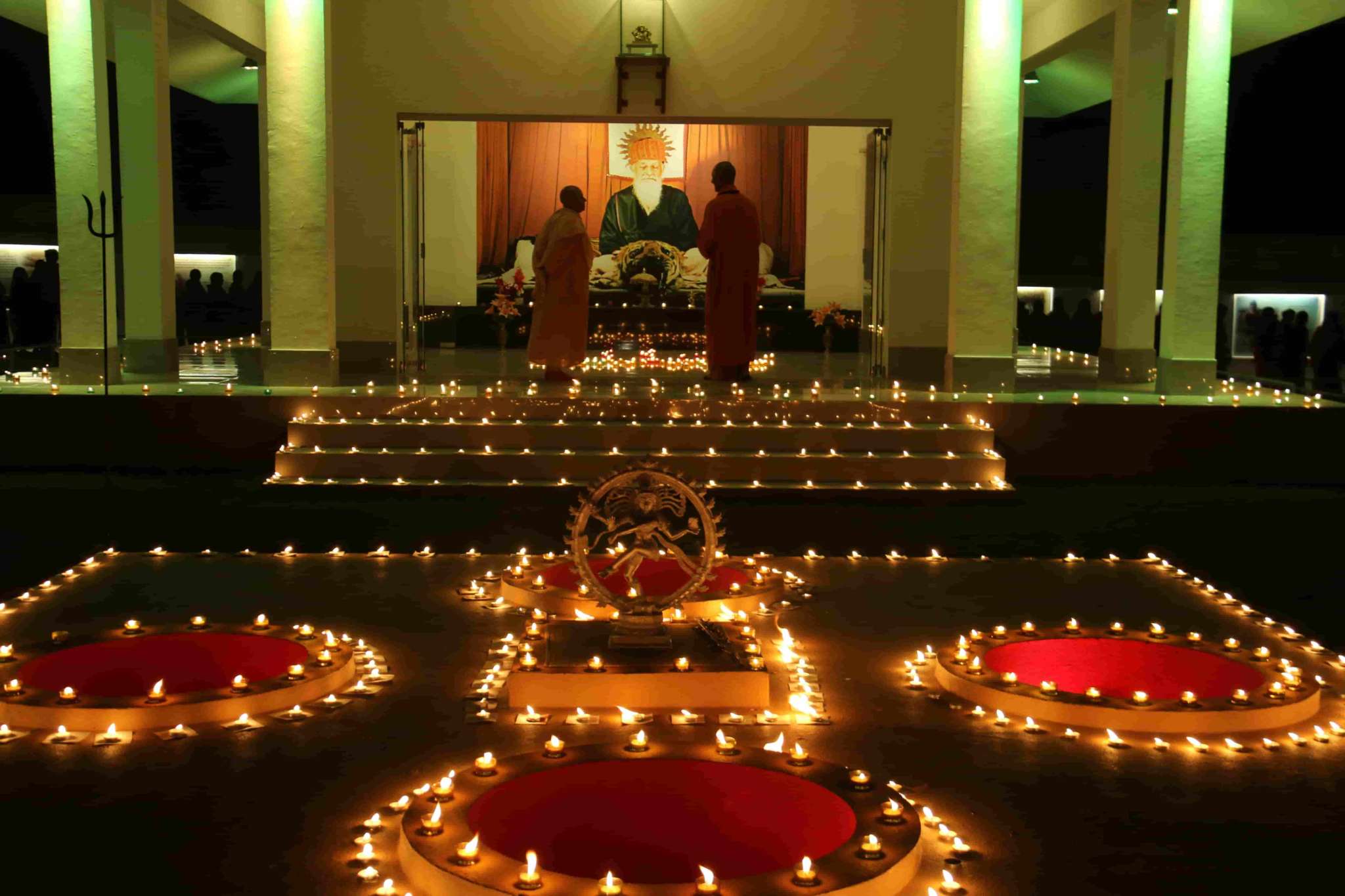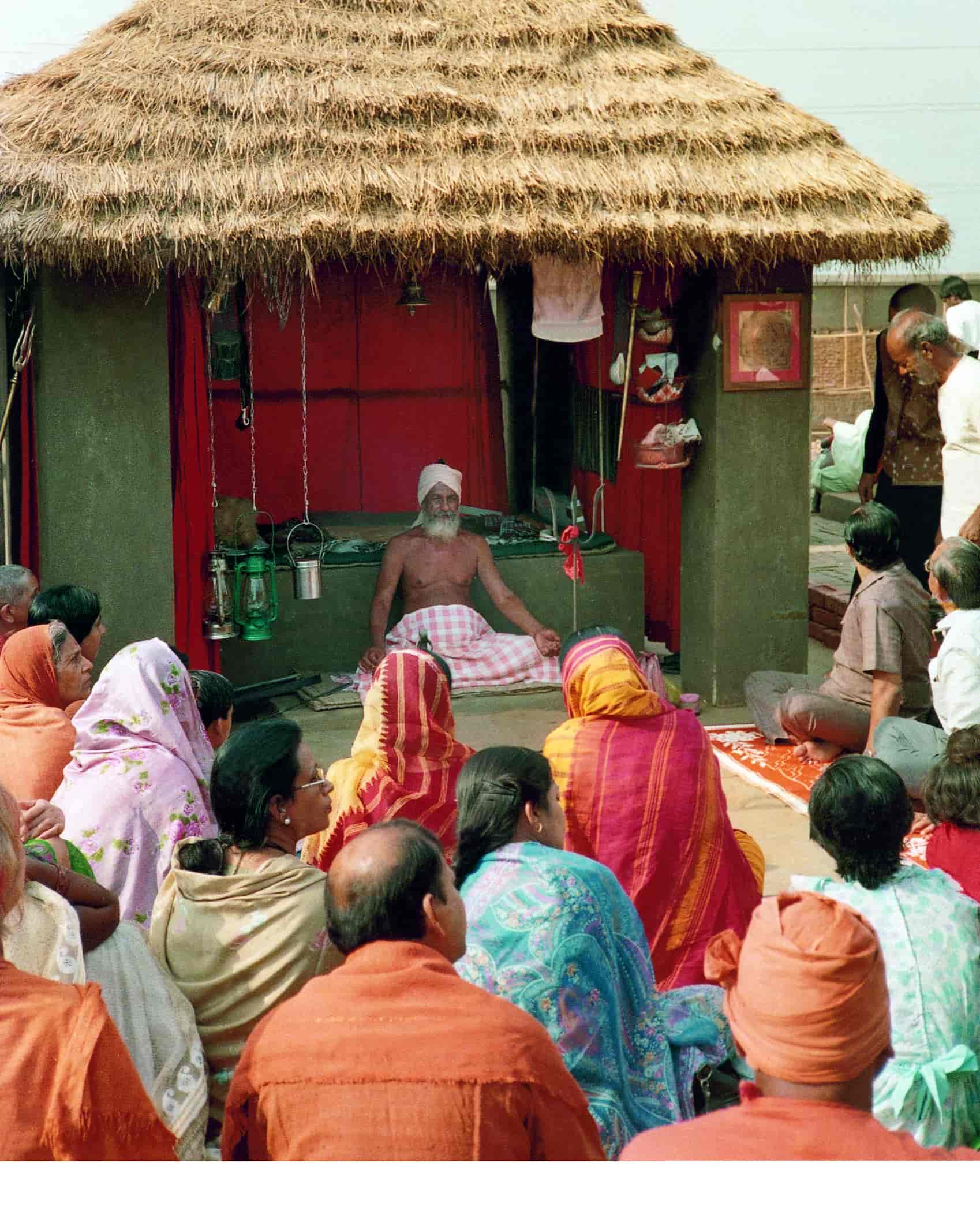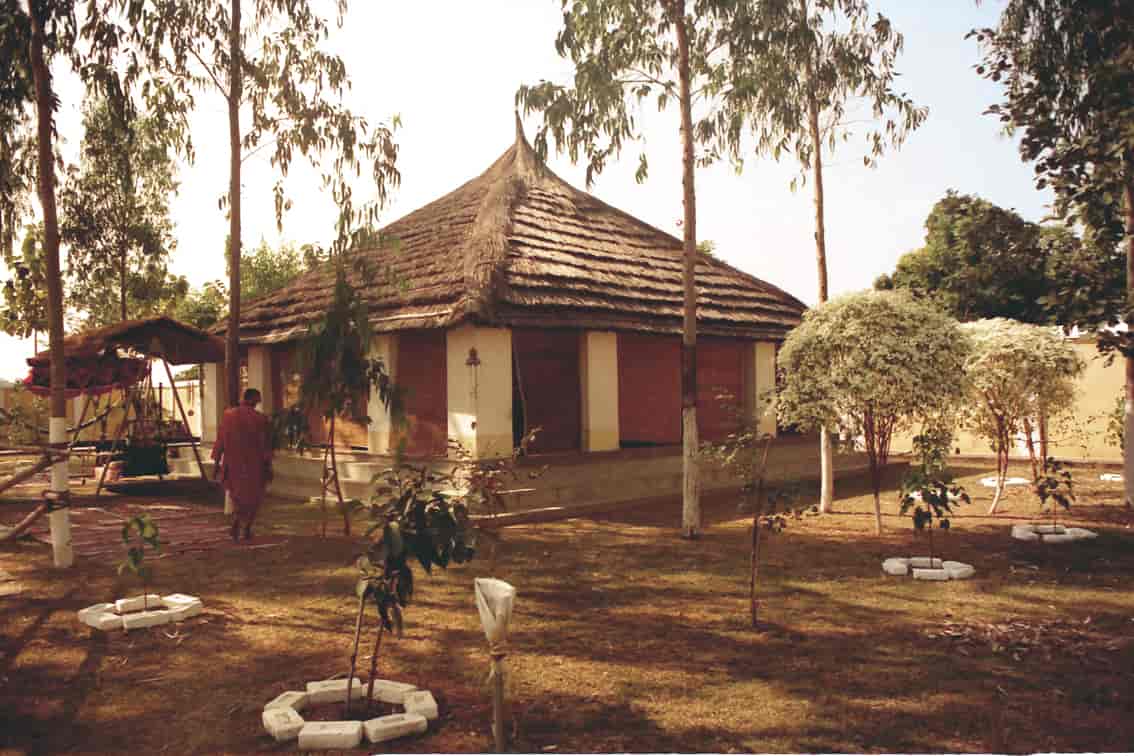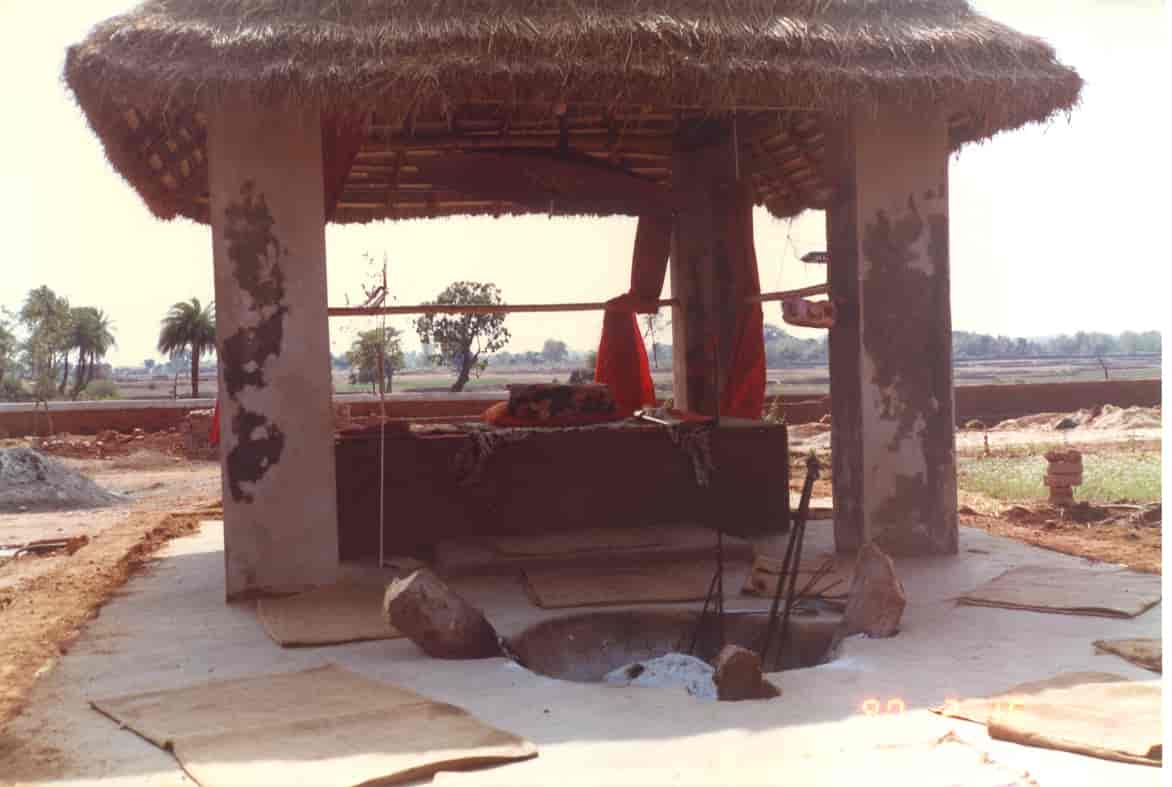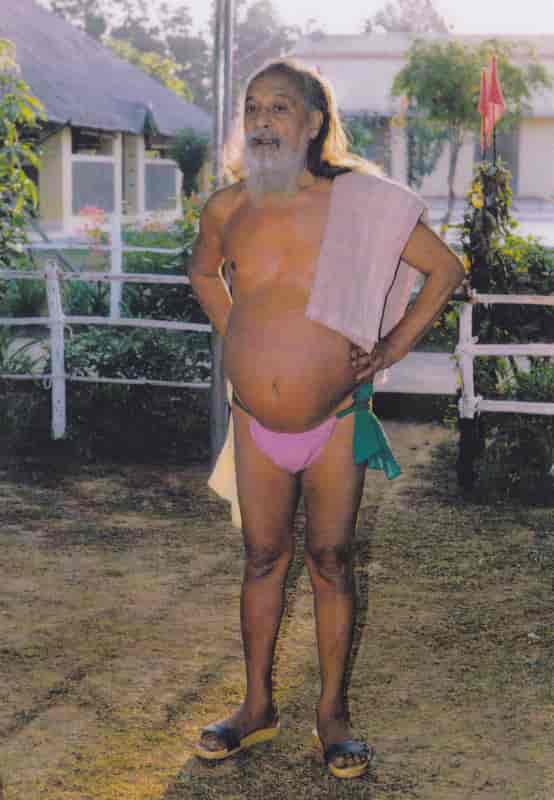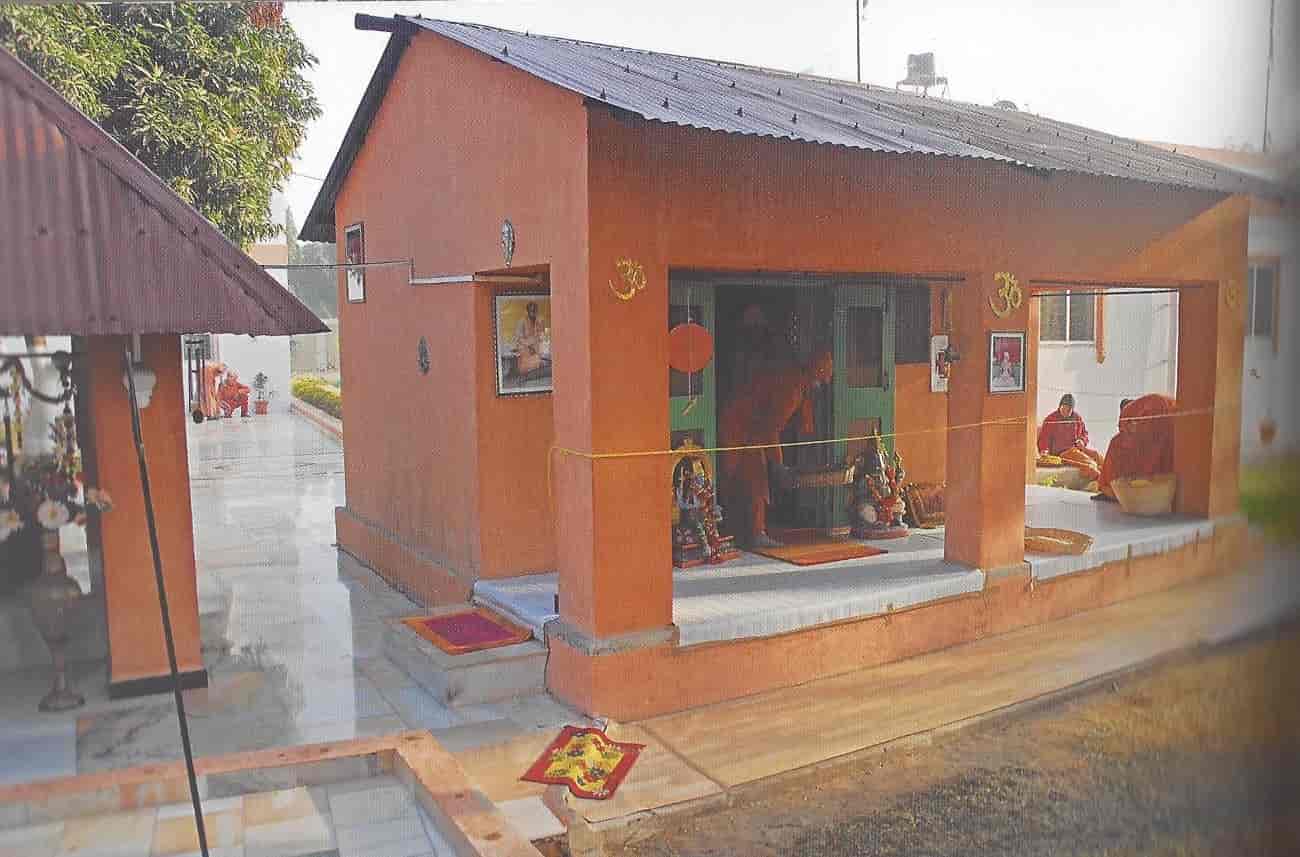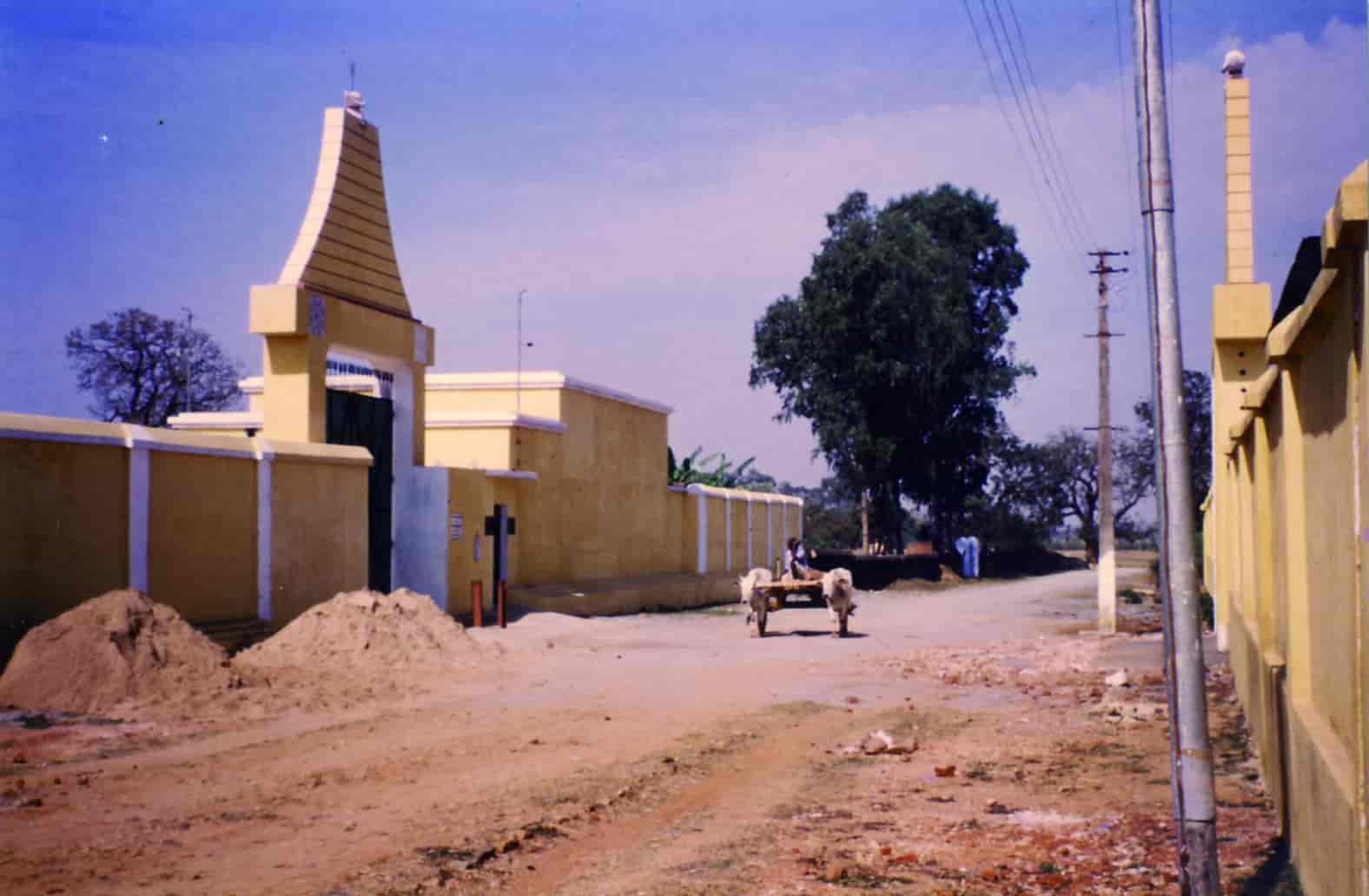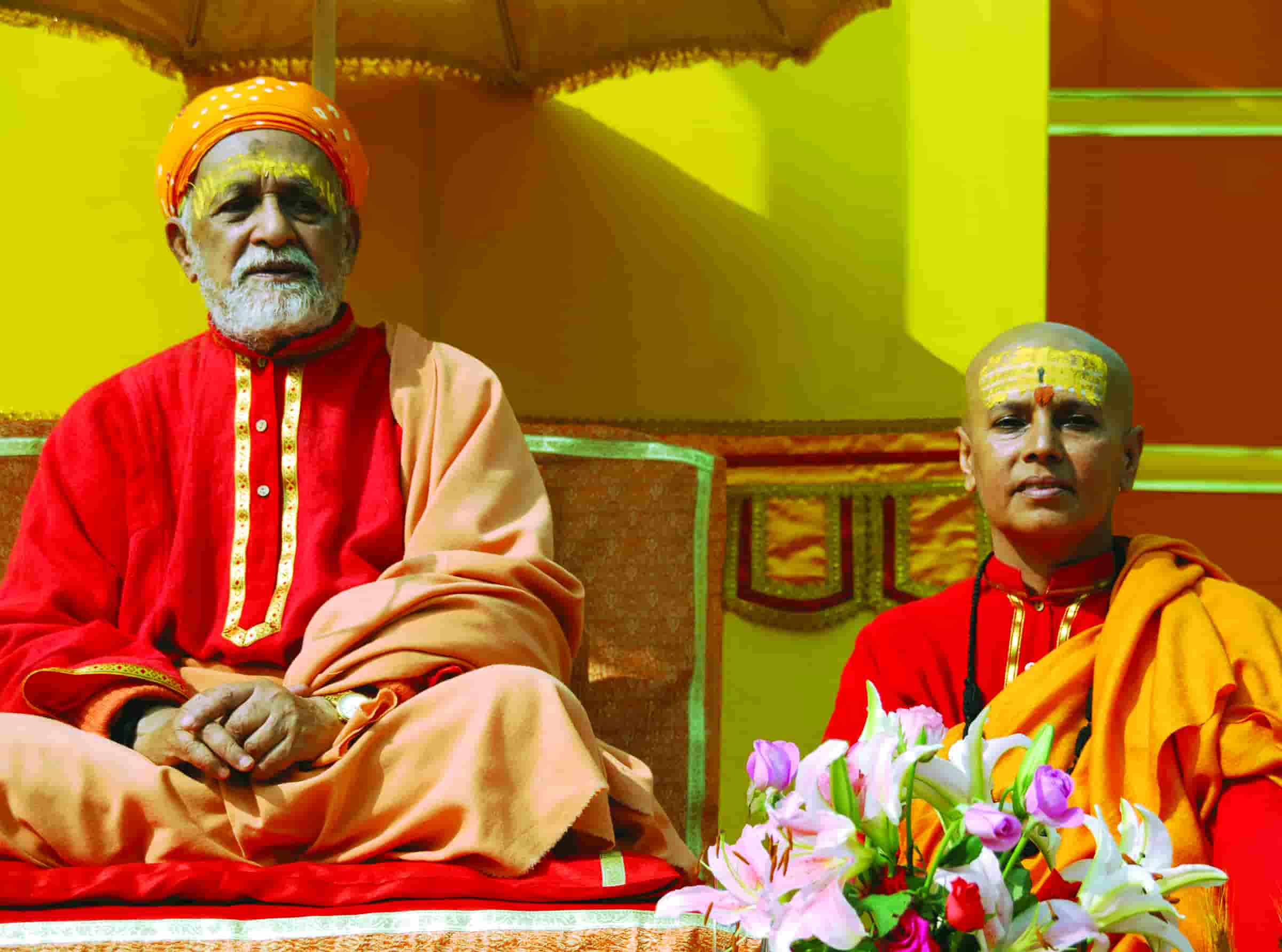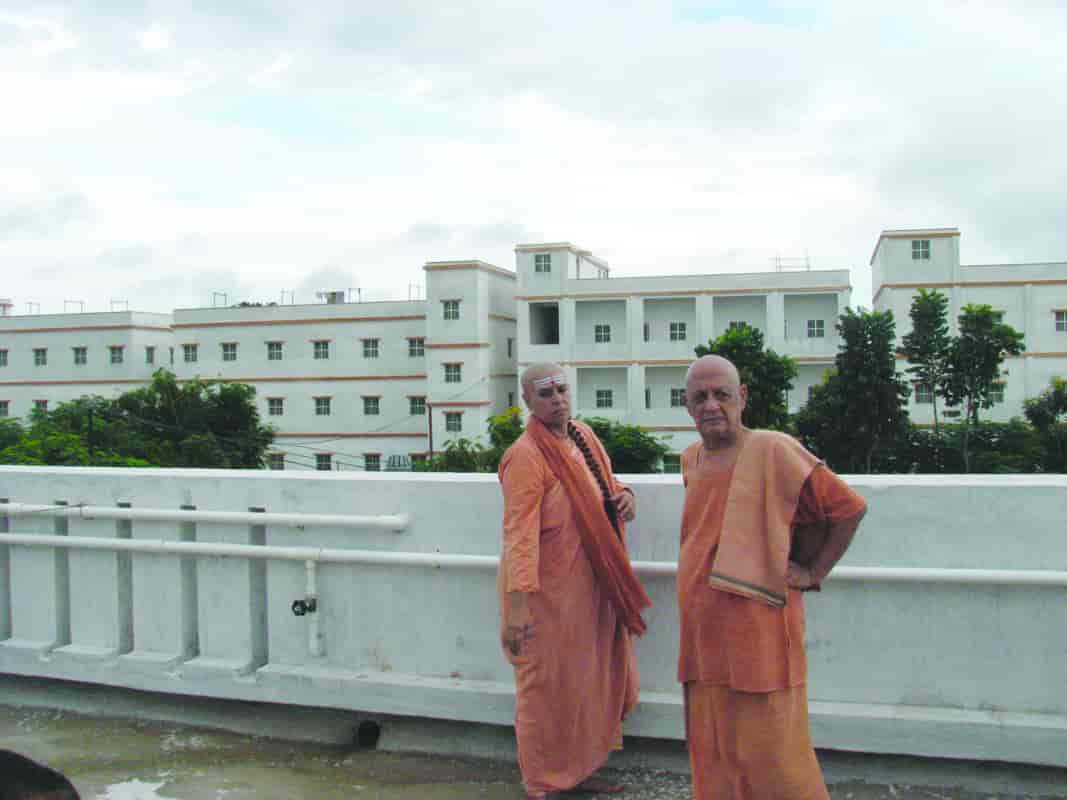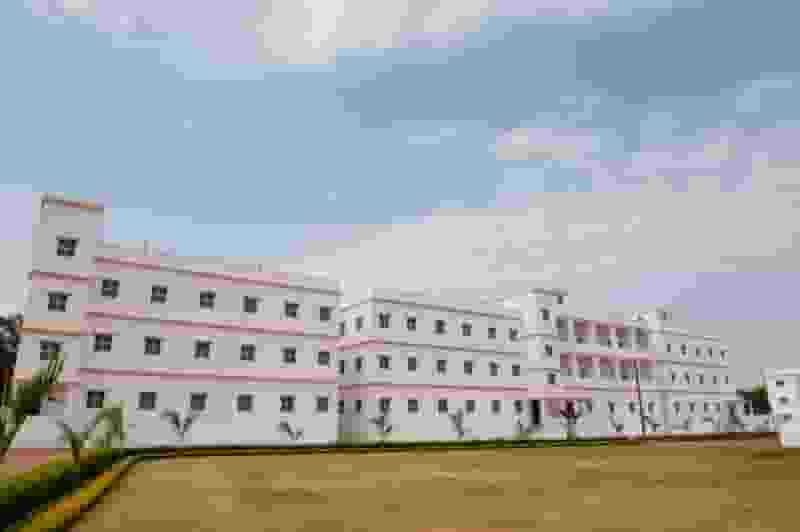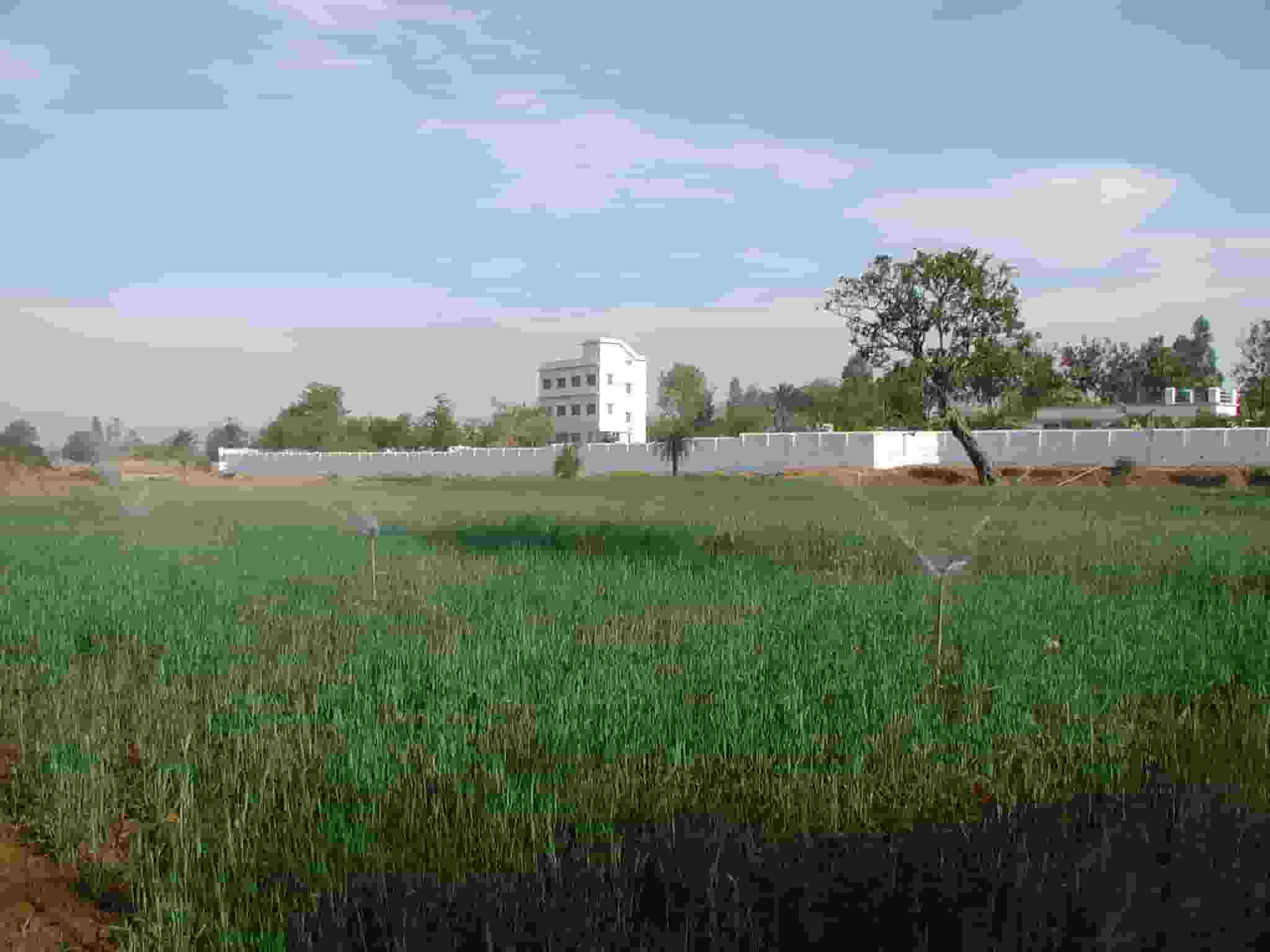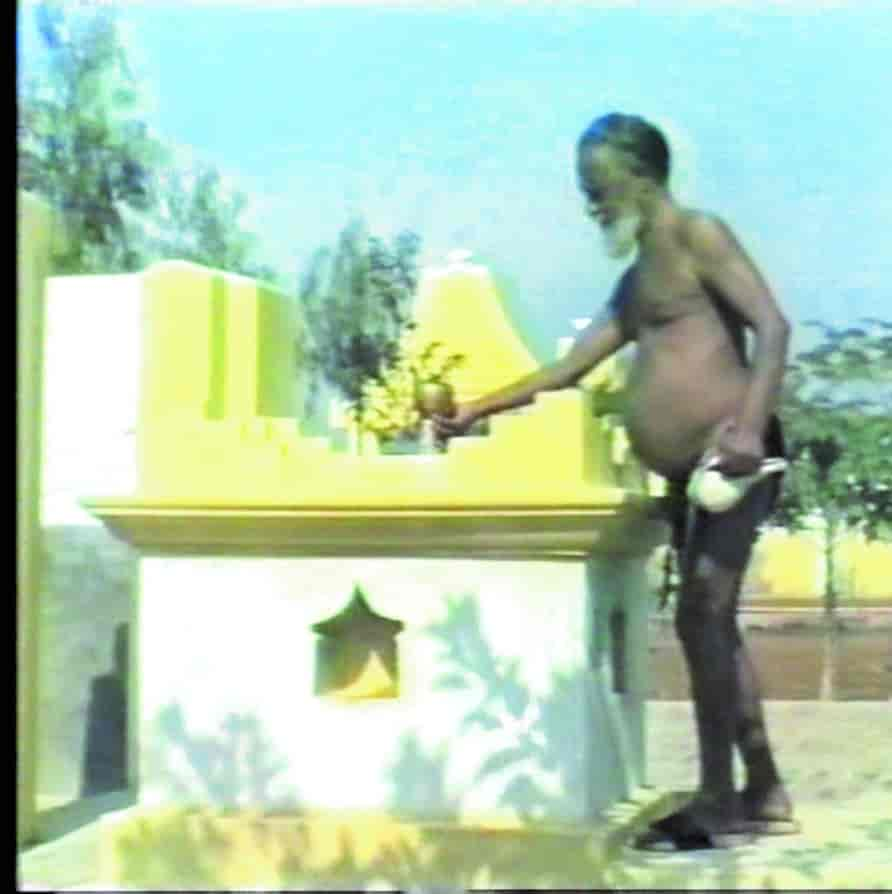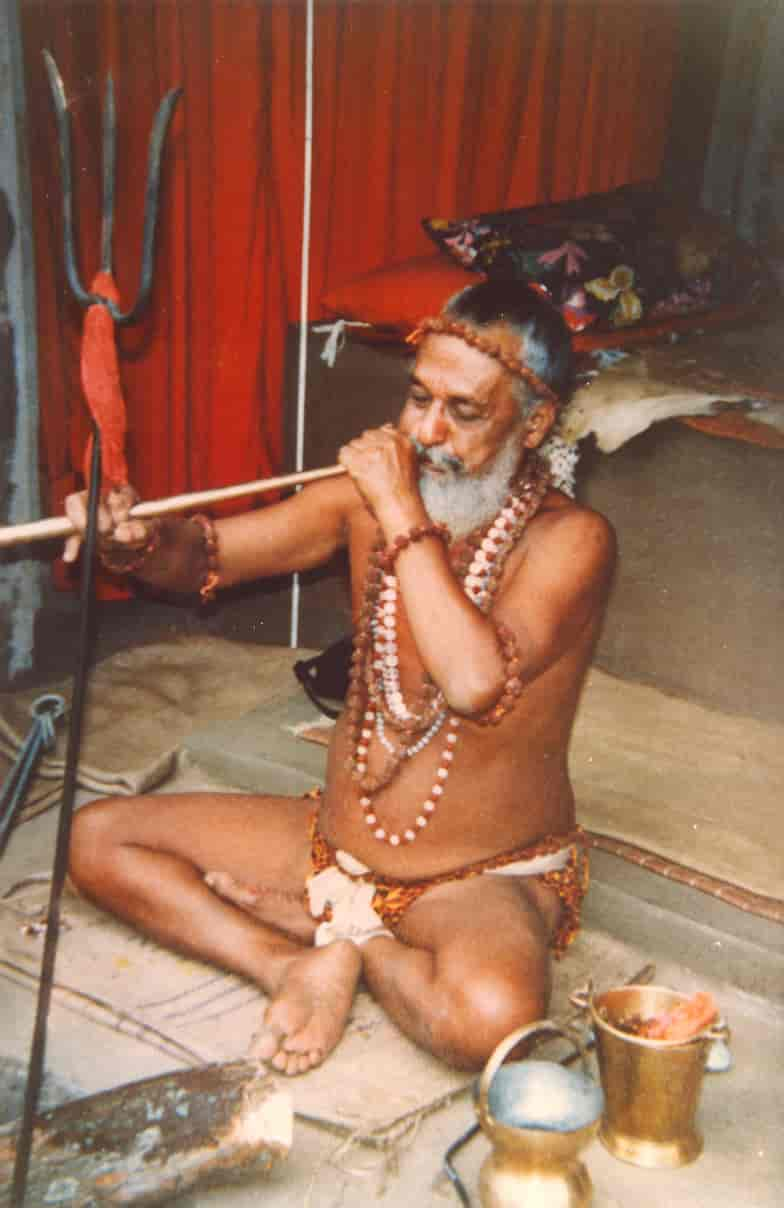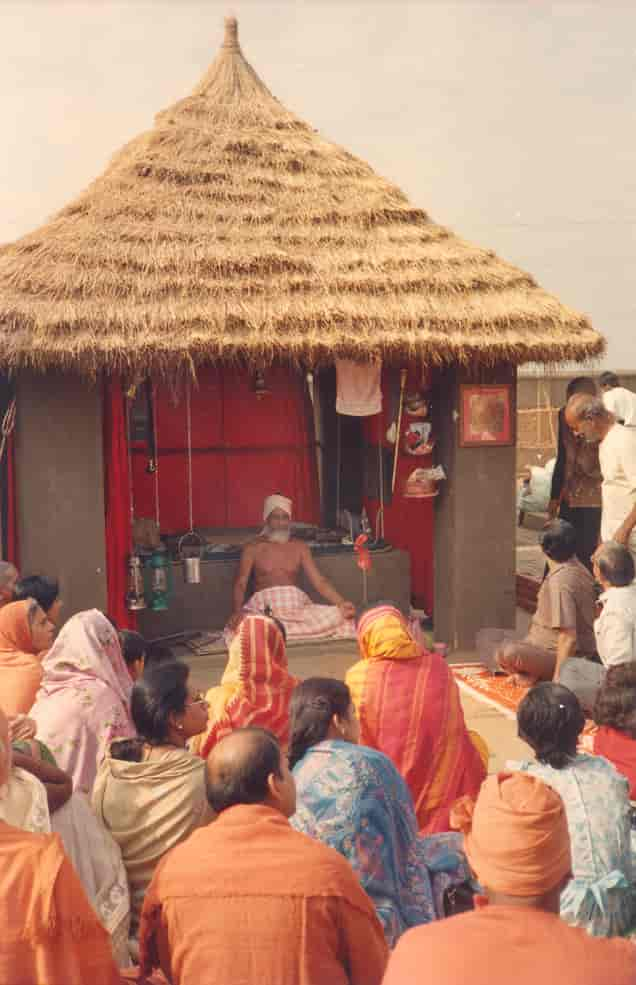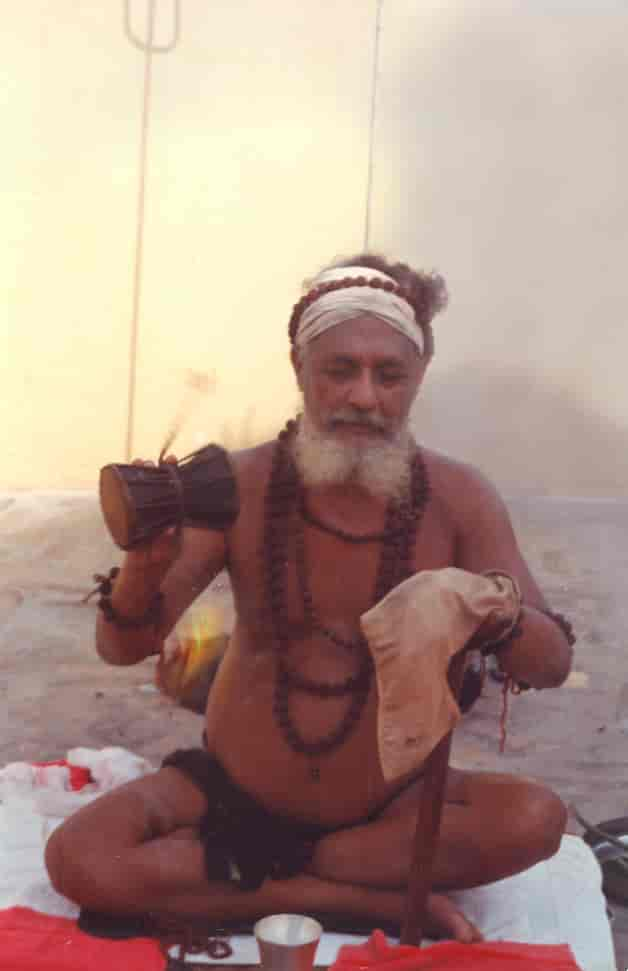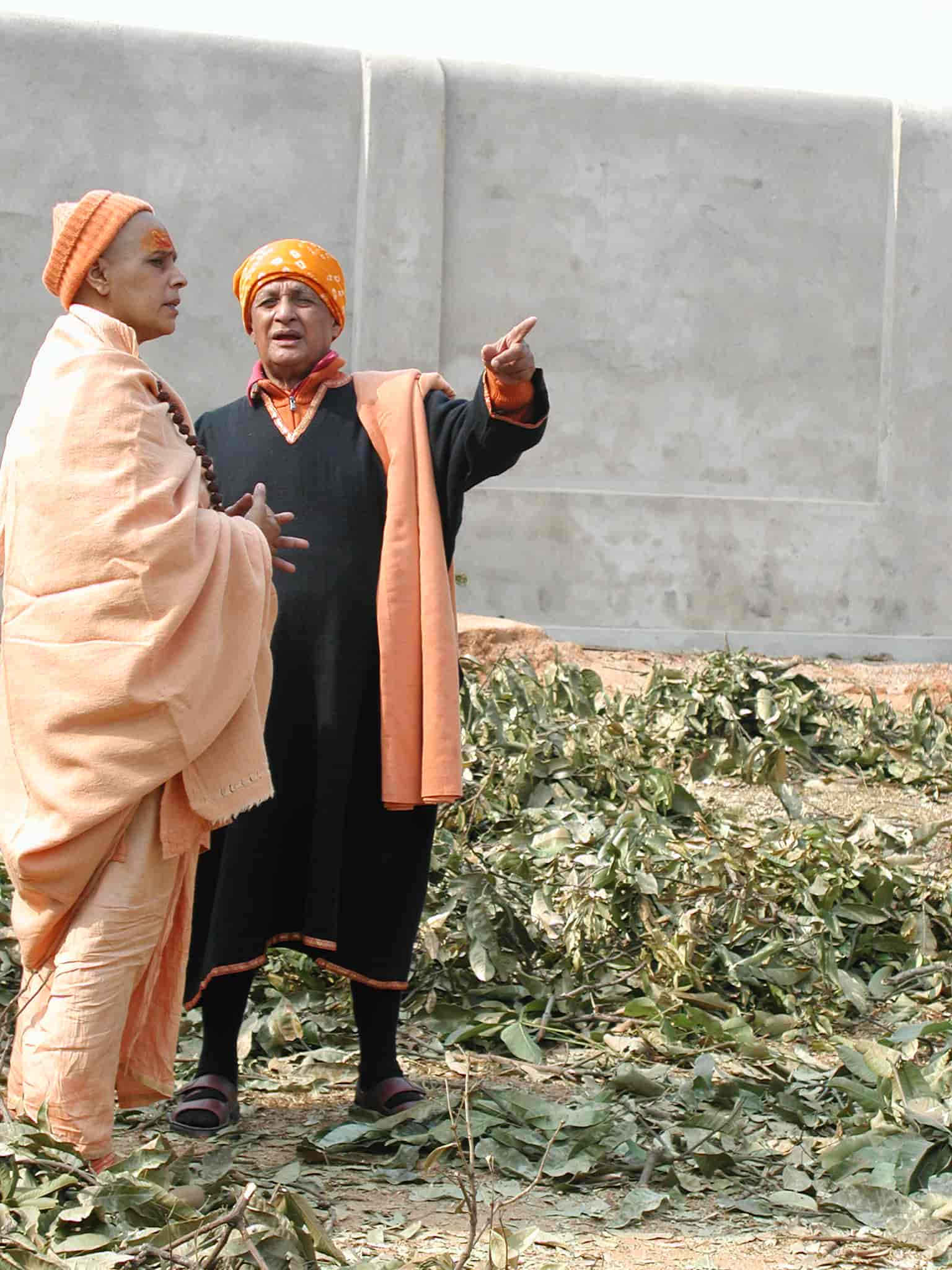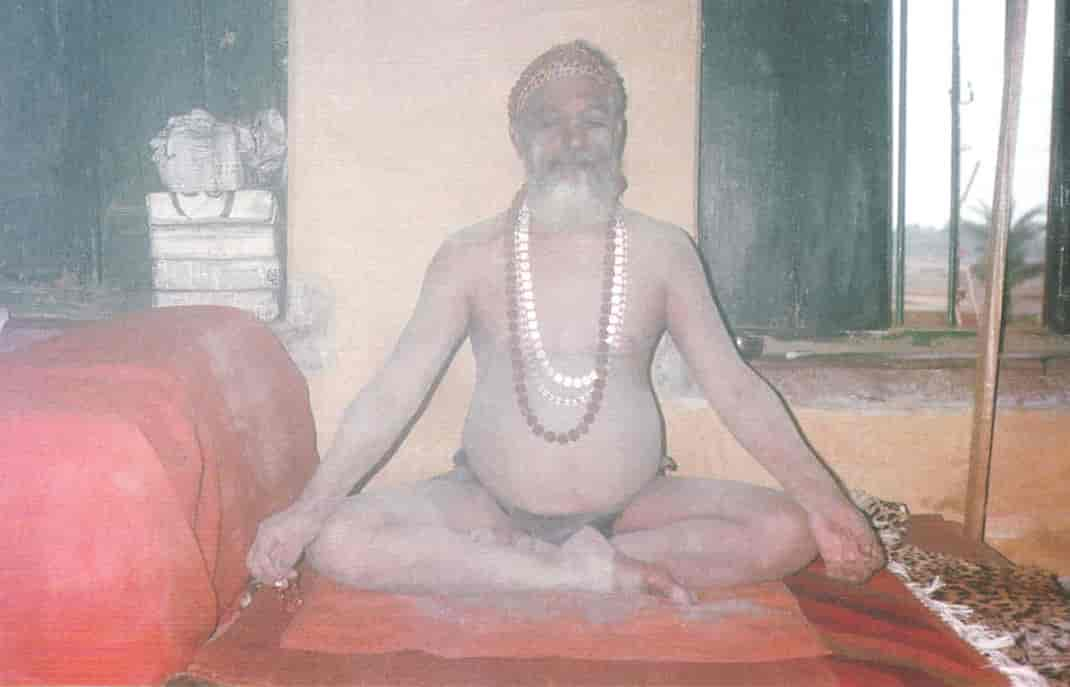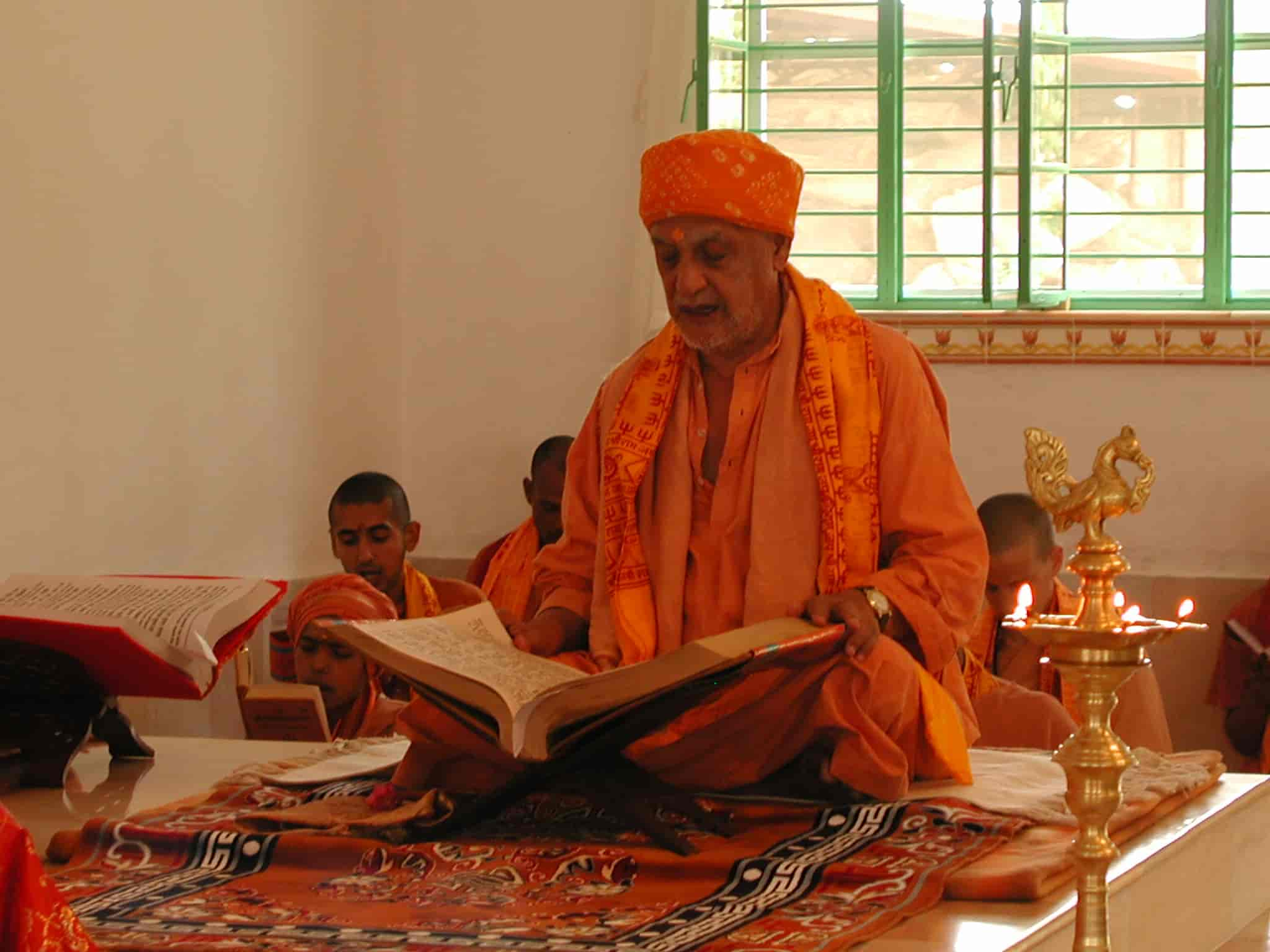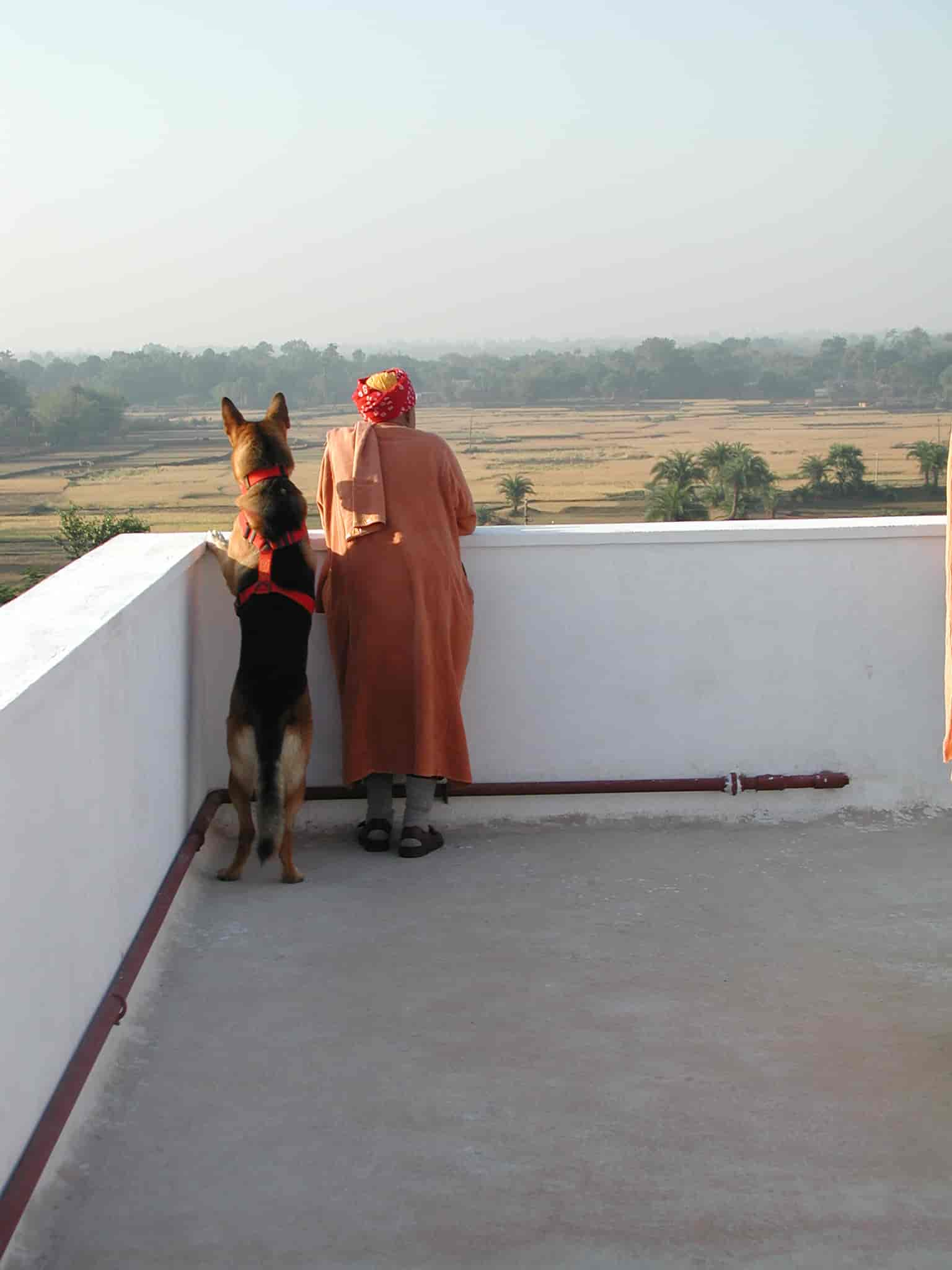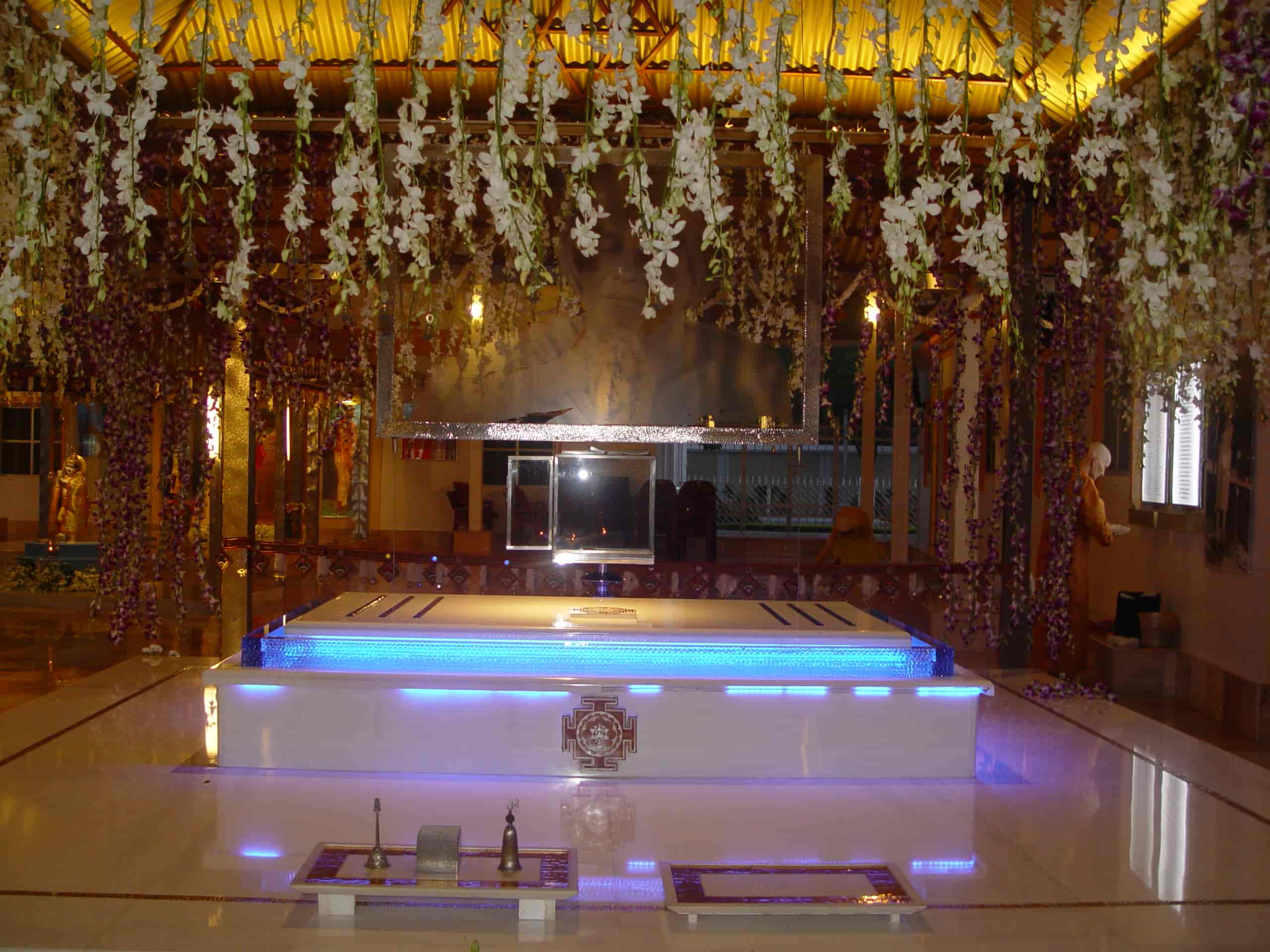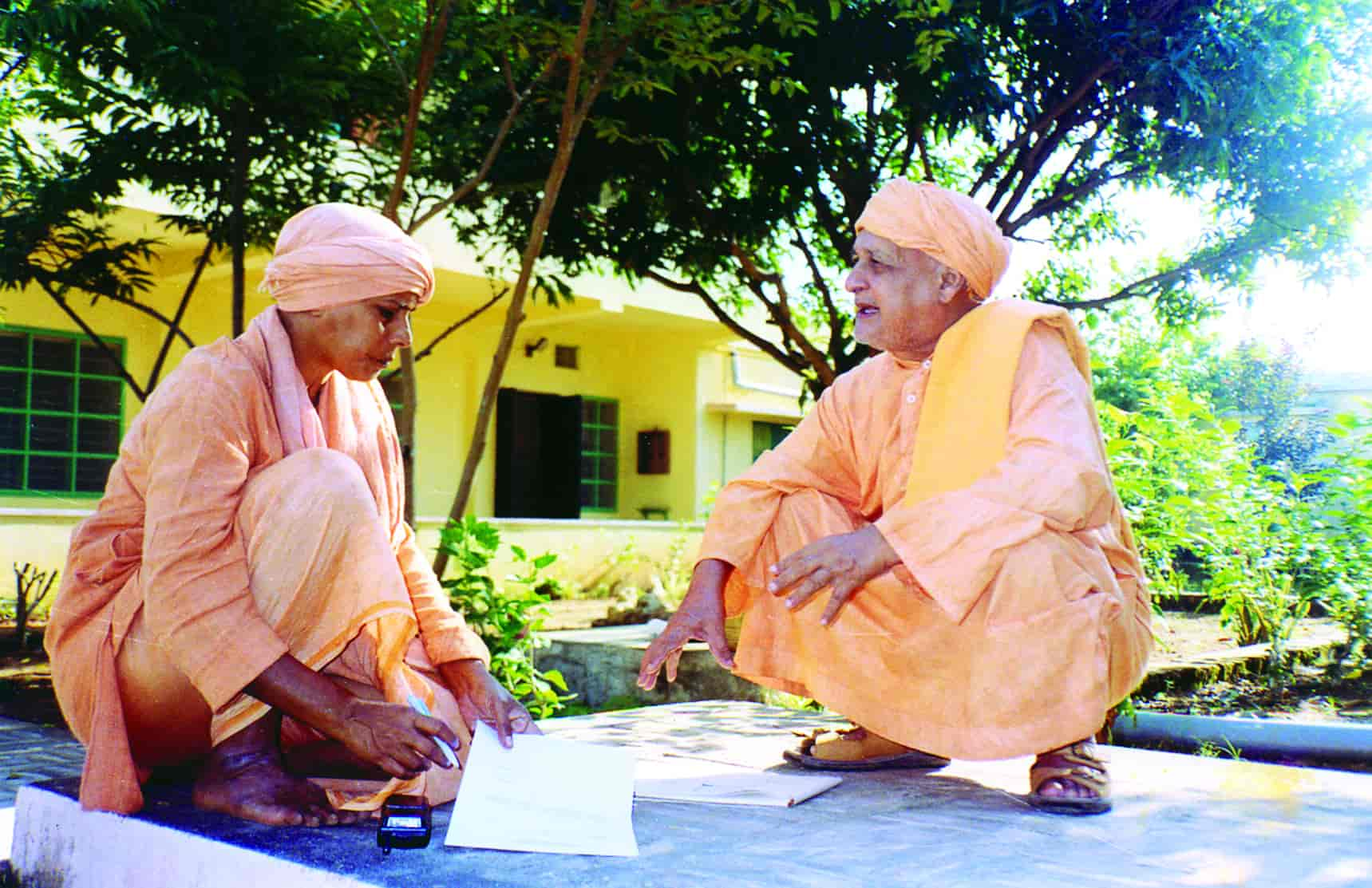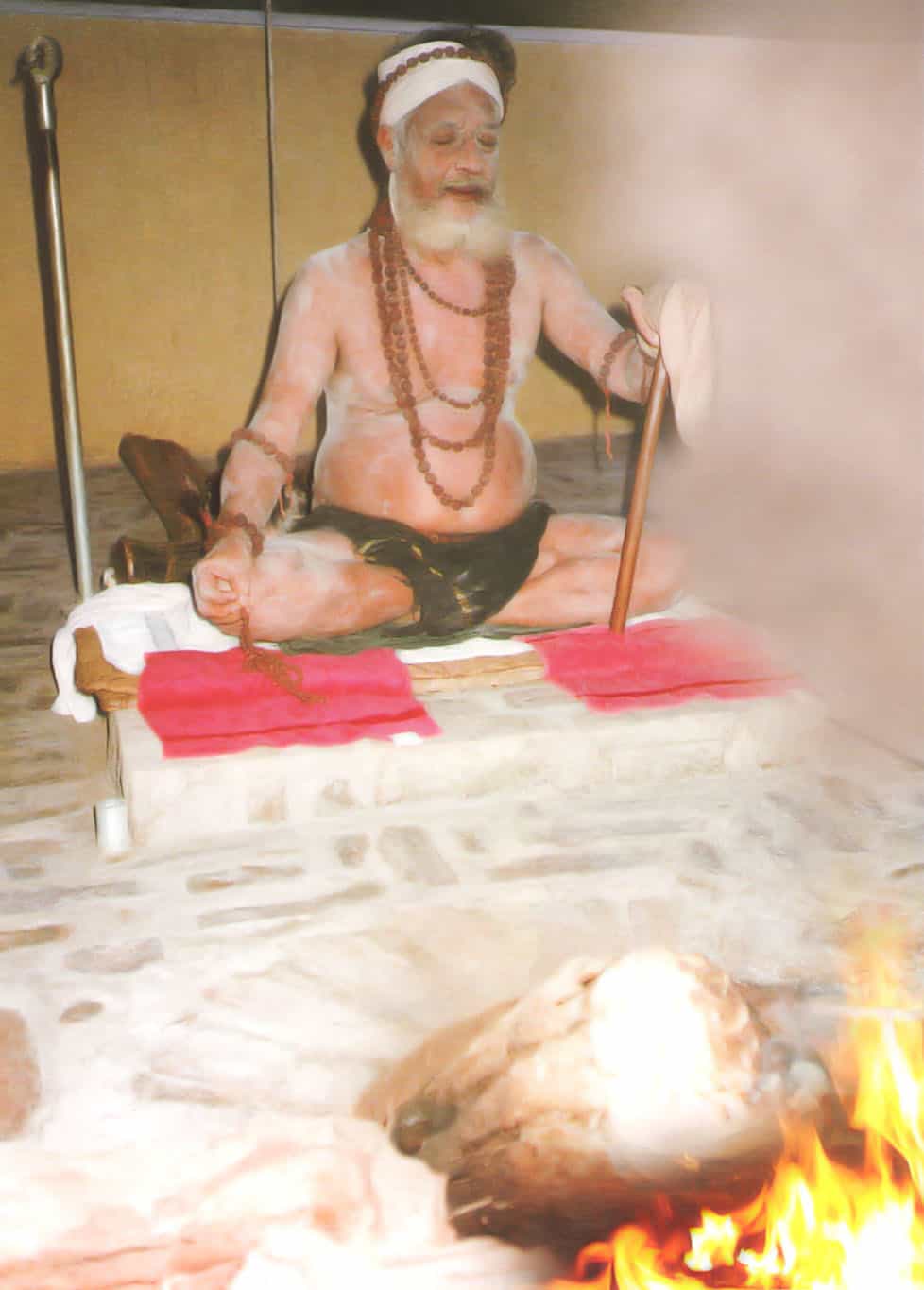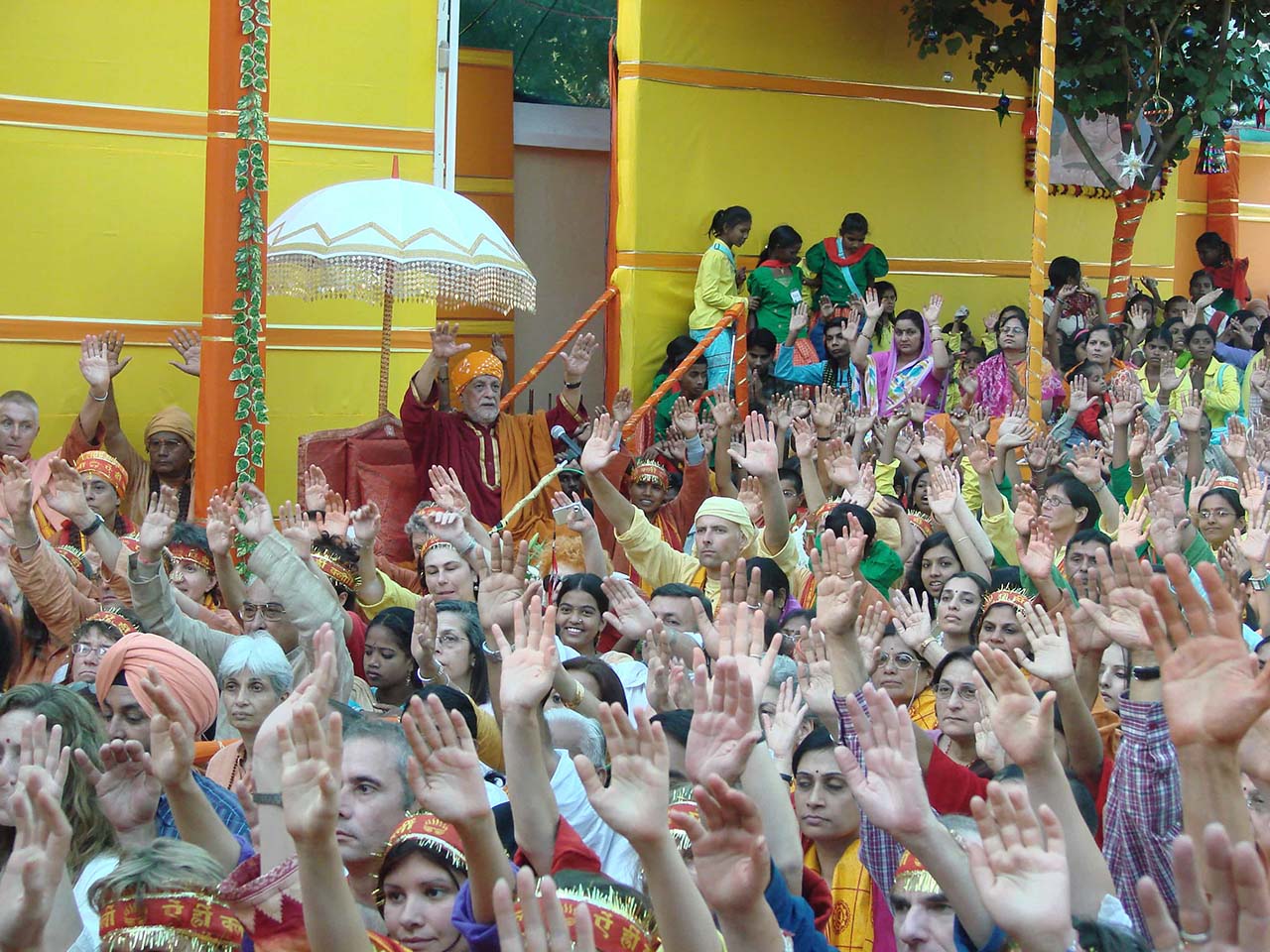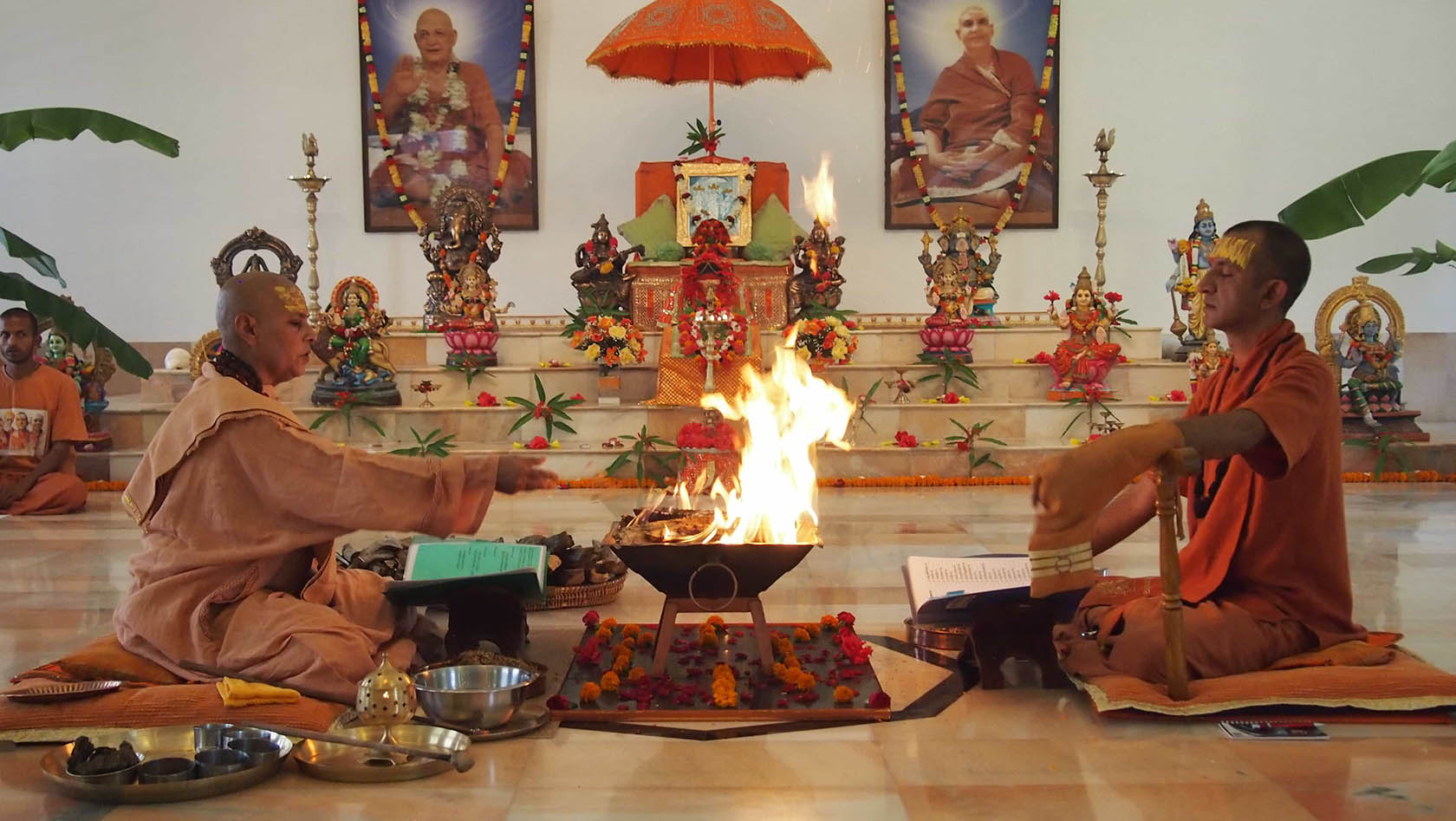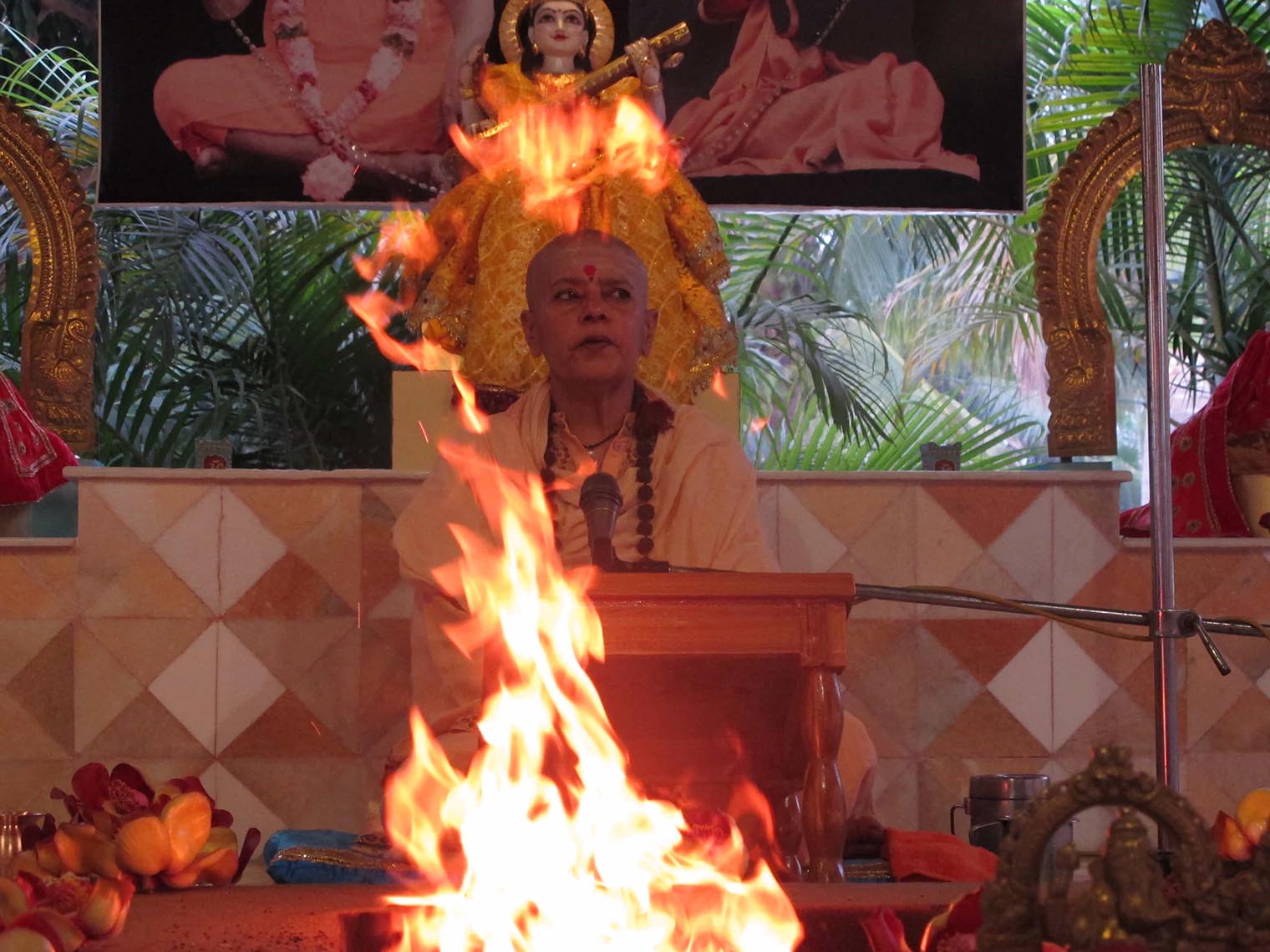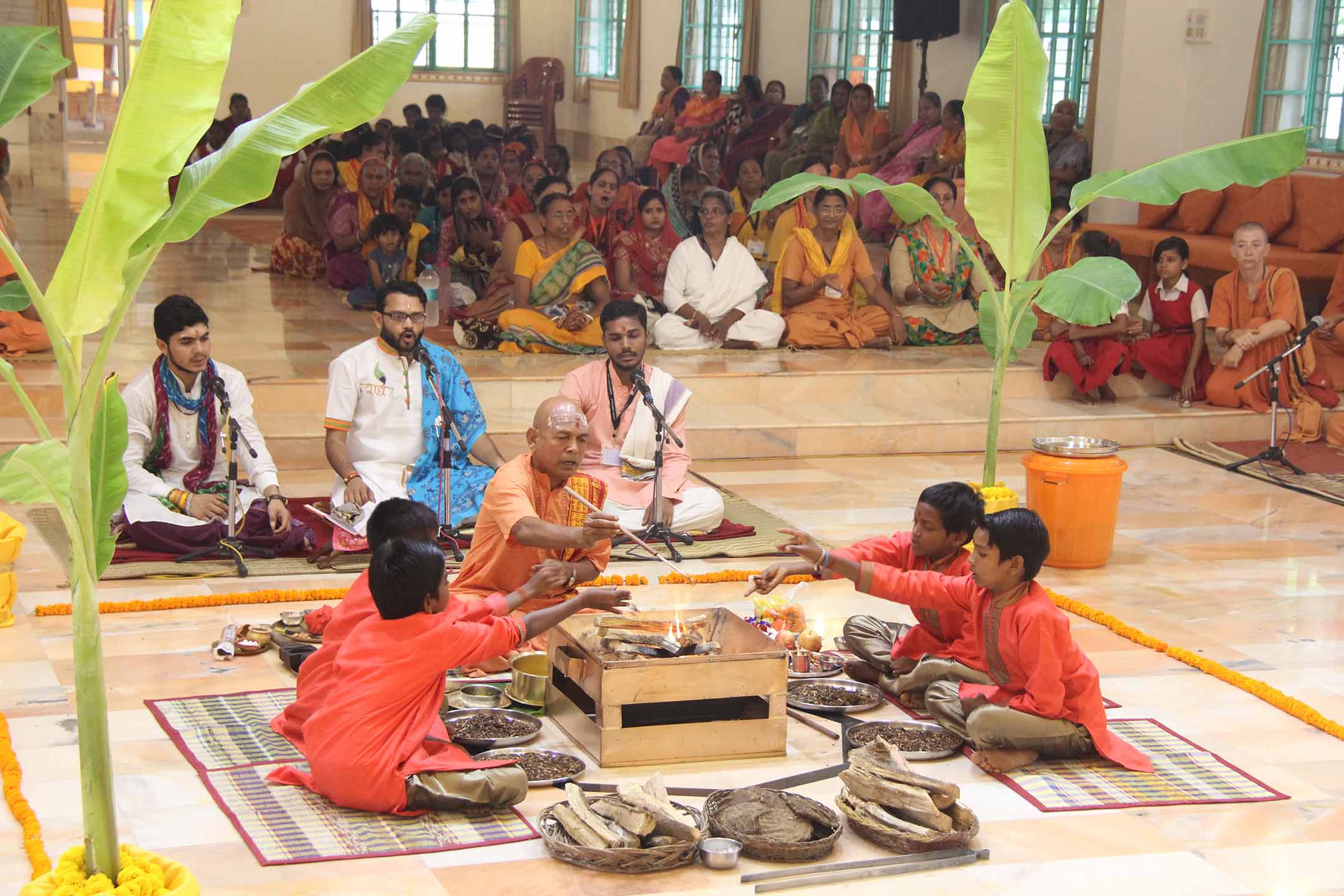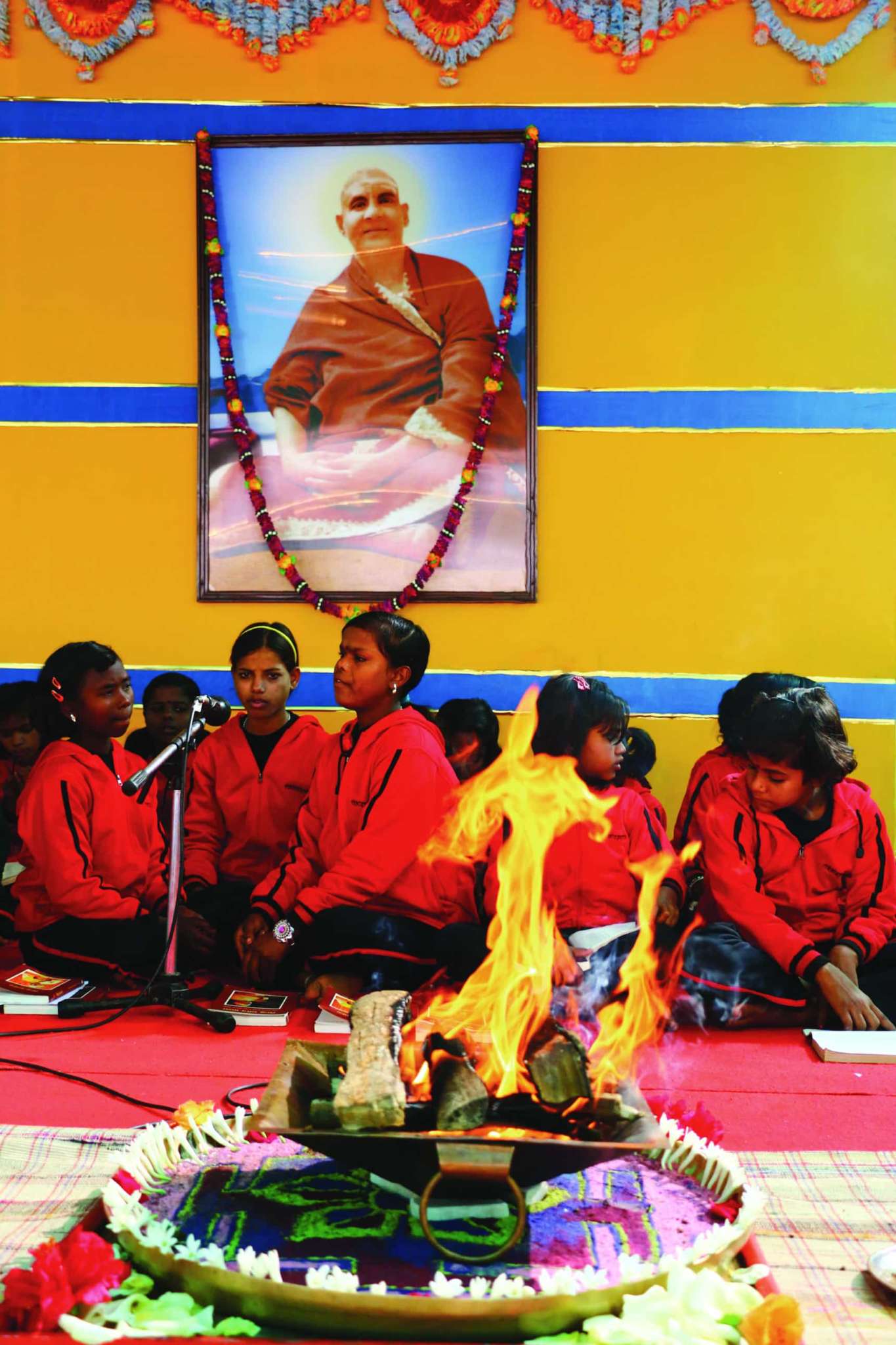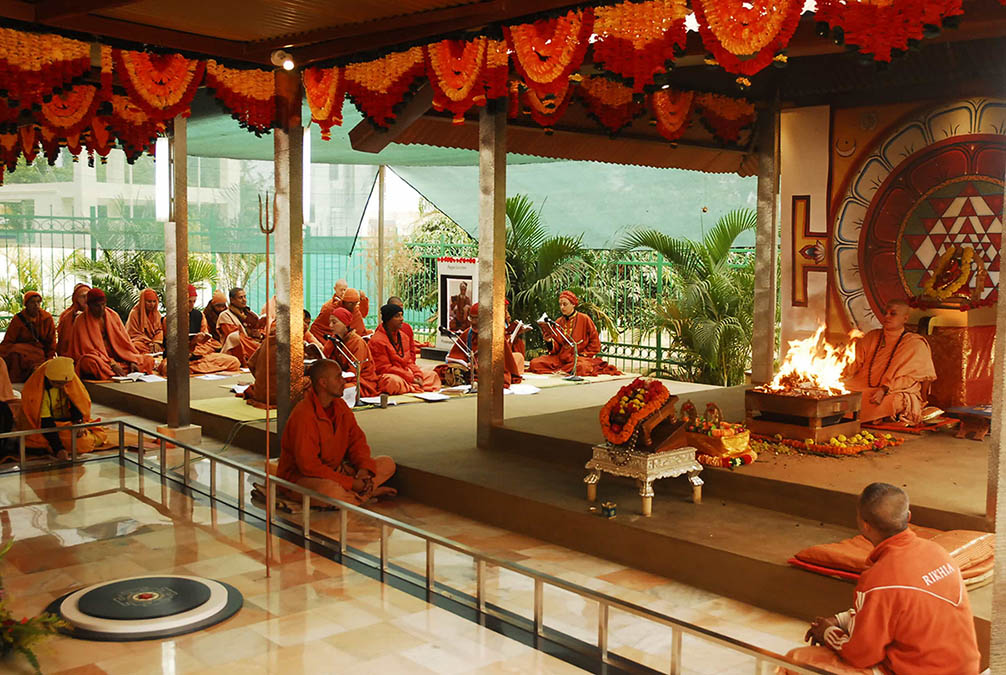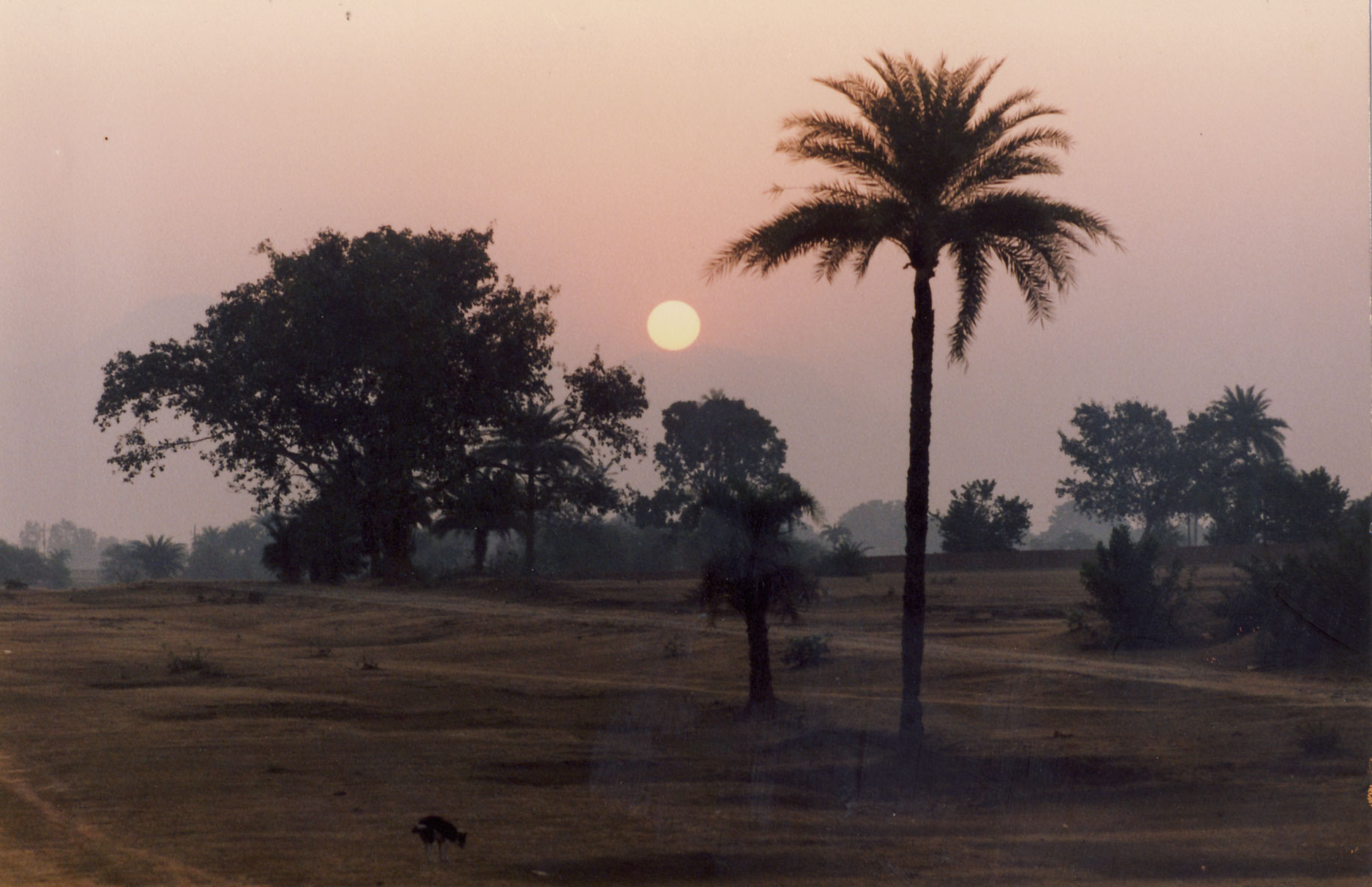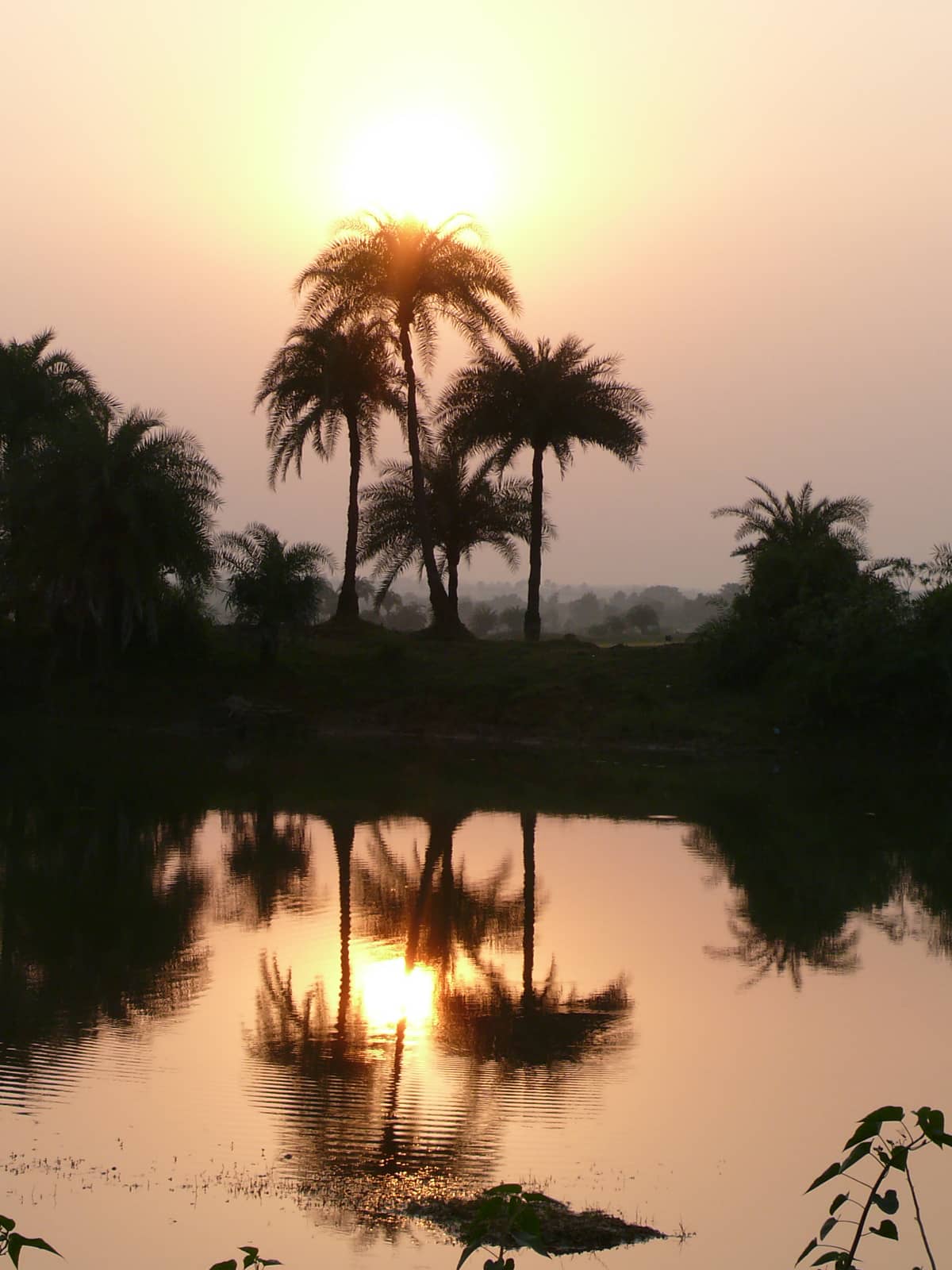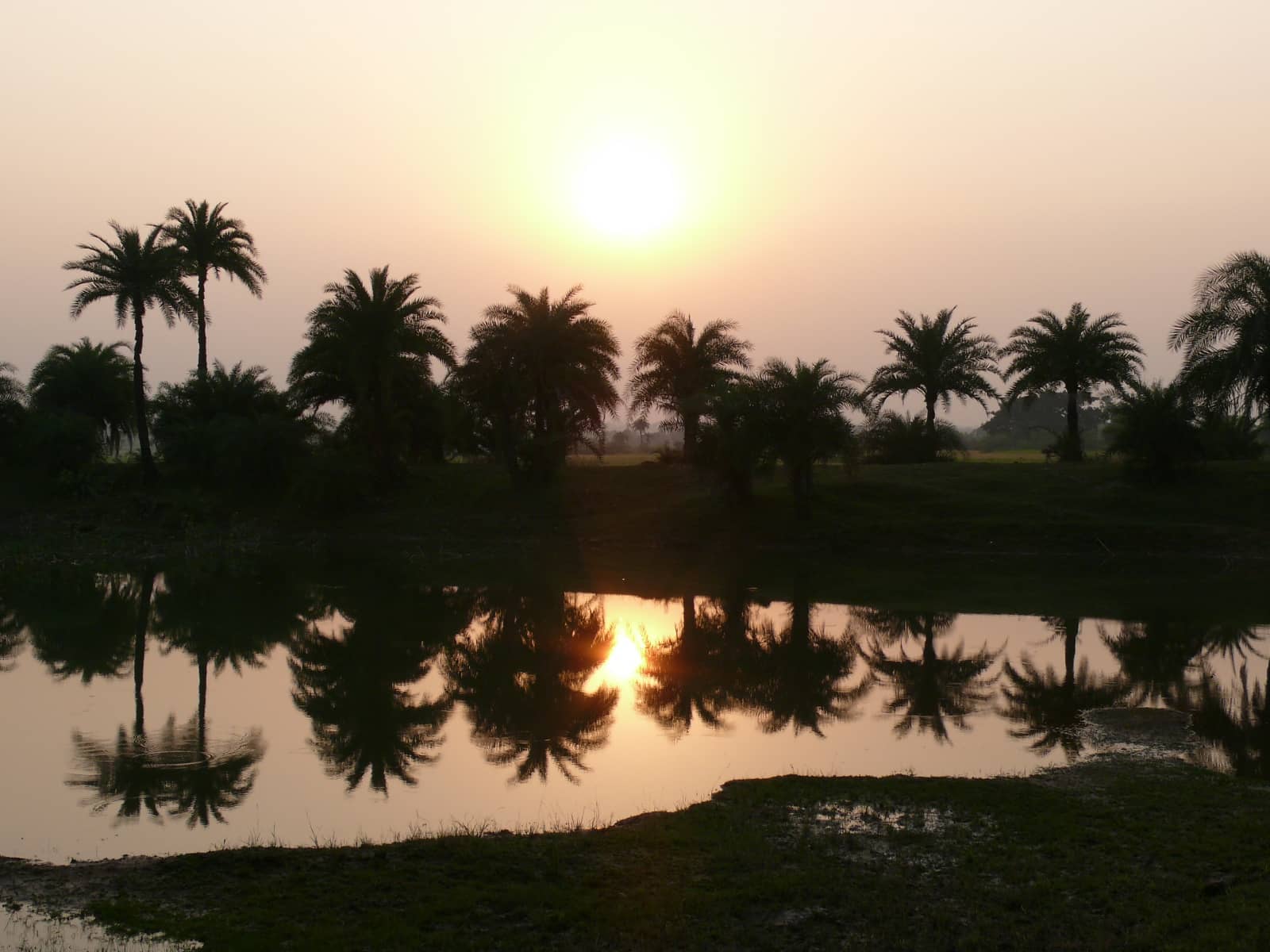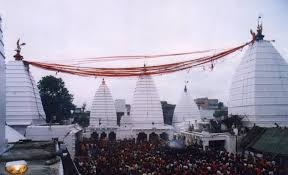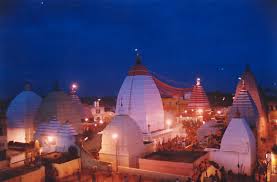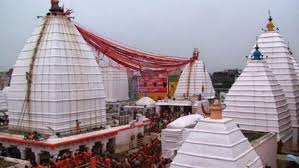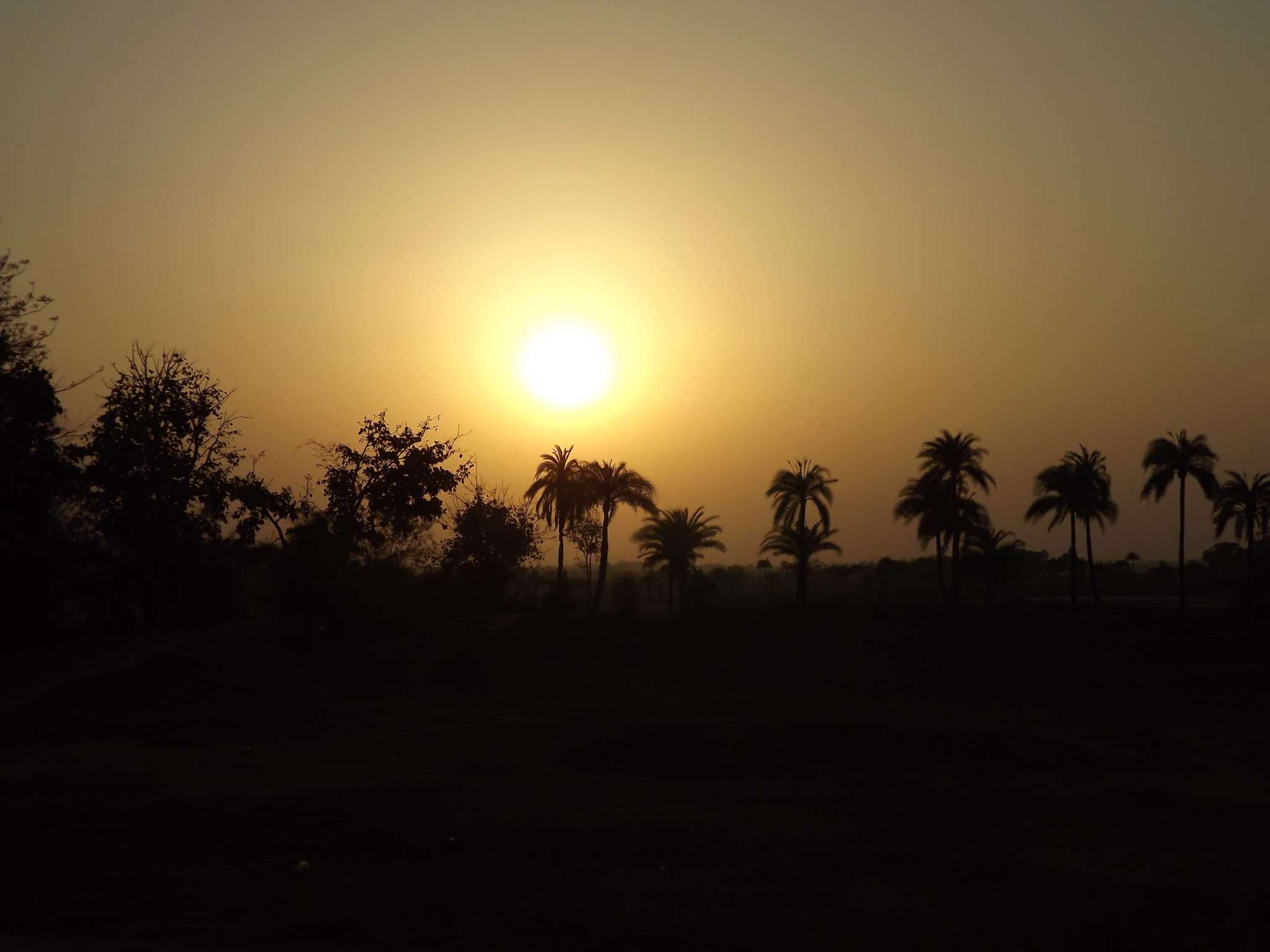About Rikhiapeeth
About Rikhiapeeth
Rikhiapeeth is situated in a remote village, twelve kilometres from the renowned temple town of Deoghar, Jharkhand. It is the tapobhumi of the great spiritual luminary and exponent of Yoga, Paramahansa Satyananda, who is renowned world-wide for his specialised and unparalleled contribution to Yoga, Tantra and the spiritual sciences.
Rikhiapeeth is where Swami Satyananda lived the life of a Paramahansa Yogi for twenty years performing long and arduous yogic sadhanas before taking Samadhi here in 2009. In keeping with the yogic and spiritual legacy he left behind, the sprawling ashram has evolved into a vibrant epicentre where serious yoga lovers and sincere spiritual seekers from all walks of life, flock to experience the peace, harmony and true joy of living a Yogic lifestyle.
The mandate he gave for Rikhia is serve, love, give, purify. Ideal for those who wish to live yoga rather than just practise it, the main focus at Rikhiapeeth is seva (selfless service). It caters to sincere aspirants looking for a wholistic approach to Yoga as here seva is not just regarded as social service but as a sadhana or spiritual effort. Rikhiapeeth is also the official headquarters of Sivananda Math and Sivananda Ashram. Under the umbrella of these organisations the on-going activities vary from Yoga training, Yoga sadhana retreats, Yajnas, Discourses on Yoga, Tantra and Philosophy to ashram lifestyle where seva (service) of the rural communities is the main activity.
The uniqueness of Rikhiapeeth also lies in the fact that it is set in a pure, serene, rural environment which lends fullness to the yogic life emulated here. A great place to simply detox and live Yoga while being of service to others.
Peethadhishwari Swami Satyasangananda, the spiritual acharya of Rikhiapeeth, guides its multifarious activities which are based on the teachings of Swami Satyananda and his Guru Swami Sivananda.
Transformation of Rikhia
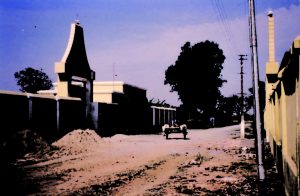 Rikhiapeeth is where Swami Satyananda lived the life of a Paramahansa Yogi, for twenty years performing long and arduous yogic sadhanas before taking Samadhi here in 2009. Paramahansa Satyananda revived the glory of the divine heritage of ancient times by bringing the teachings into a modern context through the medium of Rikhiapeeth, which has developed into a dynamic spiritual epicentre where the cardinal teachings of Swami Sivananda “Serve, Love and Give” are practiced and lived. Undoubtedly the strong spiritual presence of the rishis, enlightened sages, at Rikhia in the past has percolated down to the present day as the place is pure, serene and radiates peace.
Rikhiapeeth is where Swami Satyananda lived the life of a Paramahansa Yogi, for twenty years performing long and arduous yogic sadhanas before taking Samadhi here in 2009. Paramahansa Satyananda revived the glory of the divine heritage of ancient times by bringing the teachings into a modern context through the medium of Rikhiapeeth, which has developed into a dynamic spiritual epicentre where the cardinal teachings of Swami Sivananda “Serve, Love and Give” are practiced and lived. Undoubtedly the strong spiritual presence of the rishis, enlightened sages, at Rikhia in the past has percolated down to the present day as the place is pure, serene and radiates peace. 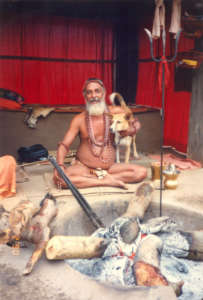 Those who are fortunate to visit Rikhiapeeth today would not be able to imagine the dire state of poverty and deprivation that Swami Satyananda found Rikhia panchayat in when he first arrived on the 23rd of September 1989. The signs of prosperity, vitality and most importantly the optimism that these villagers now express is a miraculous transformation that has occurred in a relatively short span of time.
Those who are fortunate to visit Rikhiapeeth today would not be able to imagine the dire state of poverty and deprivation that Swami Satyananda found Rikhia panchayat in when he first arrived on the 23rd of September 1989. The signs of prosperity, vitality and most importantly the optimism that these villagers now express is a miraculous transformation that has occurred in a relatively short span of time.
When Swami Satyananda arrived, it was not with the idea of opening an ashram or yoga centre. He came here to live in seclusion. Of course he remained in seclusion practicing his sadhana untill the last day of his life, but his vision, inspiration and love for the underprivileged and impoverished manifested in an unparalleled way at Rikhiapeeth.
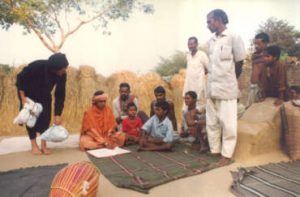 In 1991, Swami Satyananda received a divine mandate that changed the destiny of Rikhia forever, “Take care of your neighbours as I have taken care of you.” This command awakened his profound empathy for the plight of his neighbours, and from that moment the mission of Paramahansa Satyananda took an entirely different turn at Rikhia. There was no teaching of yoga and meditation as he had established in Munger. Instead he inspired people to live a life of service following the highest ideals of atmabhava, feeling and experiencing yourself in others, as outlined in Vedanta.
In 1991, Swami Satyananda received a divine mandate that changed the destiny of Rikhia forever, “Take care of your neighbours as I have taken care of you.” This command awakened his profound empathy for the plight of his neighbours, and from that moment the mission of Paramahansa Satyananda took an entirely different turn at Rikhia. There was no teaching of yoga and meditation as he had established in Munger. Instead he inspired people to live a life of service following the highest ideals of atmabhava, feeling and experiencing yourself in others, as outlined in Vedanta.
Swami Satyananda said, “Service is the greatest purifier of karmas and without internal purity spiritual life is meaningless. It is through service that spiritual evolution gains momentum and the inner journey towards the highest knowledge begins.”The transformation of Rikhia has occurred as a sadhana, spiritual practice, not as a charity. What we see today are the fruits of the intense tapasya, austerities, performed by Paramahansa Satyananda throughout his life and the fulfilment of a divine mandate, which has been exalted here in Rikhiapeeth.
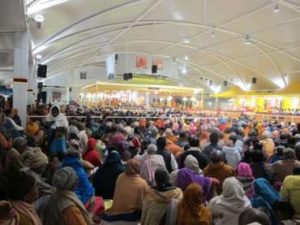 Rikhiapeeth has developed into a vibrant spiritual epicentre abundant in peace, plenty and prosperity. Aspirants, seekers, devotees, householders and sannyasins come from all parts of the world to live and work together for the benefit of others by following the high ideals of seva (selfless service), sadhana (spiritual practice), swadhyaya (self-study) and satsang (association with truth). It is a place of inspiration and joy for the thousands of natives who live in the hundreds of villages that surround Rikhiapeeth, as well as for millions of spiritual aspirants and devotees who come to imbibe the spiritual vibrations that abound in this sacred place.
Rikhiapeeth has developed into a vibrant spiritual epicentre abundant in peace, plenty and prosperity. Aspirants, seekers, devotees, householders and sannyasins come from all parts of the world to live and work together for the benefit of others by following the high ideals of seva (selfless service), sadhana (spiritual practice), swadhyaya (self-study) and satsang (association with truth). It is a place of inspiration and joy for the thousands of natives who live in the hundreds of villages that surround Rikhiapeeth, as well as for millions of spiritual aspirants and devotees who come to imbibe the spiritual vibrations that abound in this sacred place.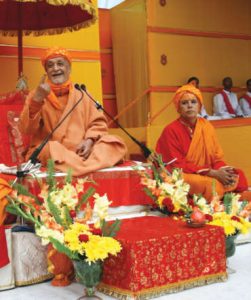
On 25th of November 2006 during the auspicious occasion of the Rajasooya Yajna, which was performed by Sri Swamiji at Rikhia for twelve years, Paramahansa Satyananda officially declared “The Rikhia ashram will now be known as Rikhiapeeth. Peeth means ‘seat’ an apt term for Rikhia as the instructions given to me by Swami Sivananda have culminated and fructified here. Rikhia is an ashram in the original sense of the word. Swami Satyasangananda is the Peethadhishwari or acharya of Rikhiapeeth and has been given the sankalpa that the three cardinal teachings of Swami Sivananda will be practiced and lived here. This is the future vision of Rikhiapeeth.”
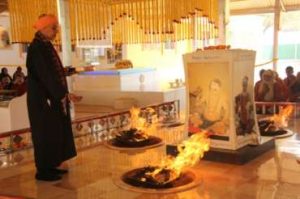
Swami Satyasangananda has the responsibility to carry on the tradition that was established by her Guru Swami Satyananda. He gave her the sankalpa or resolve, to ensure that the three fundamental teachings of Swami Sivananda, ‘Serve, Love, Give’ are practiced and lived in Rikhiapeeth. Swami Satyasangananda has lived in Rikhiapeeth for over 20 years. It is through her that the mandate and vision of Sri Swamiji held for Rikhia is being fulfilled. Since the inception, she has been instrumental in creating and developing his Tapobhumi, the place of intense spiritual practices and austerities. Her tireless efforts and dedication to her Guru has transformed Rikhiapeeth into what it is today.
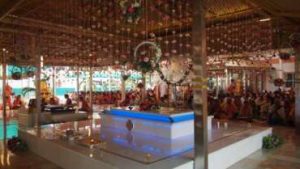 The diverse and uplifting activities, spiritual awareness events, yoga trainings and yoga sadhanas and seva activities combined with the intense spiritual environment generated by years of intense sadhana by a realized yogi is indeed unique. It is a training ground for sannyasins, sincere aspirants and those who want to lead a divine life. It also offers the opportunity for householders from all walks of life to spend time in the ashram and experience the joys and benefits of living in the spirit of tyaga (renunciation), seva (selfless service) and samarpan (surrender).
The diverse and uplifting activities, spiritual awareness events, yoga trainings and yoga sadhanas and seva activities combined with the intense spiritual environment generated by years of intense sadhana by a realized yogi is indeed unique. It is a training ground for sannyasins, sincere aspirants and those who want to lead a divine life. It also offers the opportunity for householders from all walks of life to spend time in the ashram and experience the joys and benefits of living in the spirit of tyaga (renunciation), seva (selfless service) and samarpan (surrender).
Rikhiapeeth the Tapobhumi
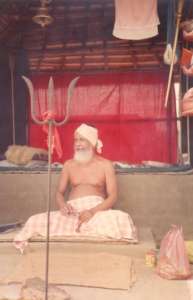 Almora was Swami Satyananda’s janma bhumi, birth place, Rishikesh was his shiksha bhumi, place of discipleship, Munger was his karma bhumi, place of perfection in action, and Rikhia was his tapobhumi, place of intense spiritual practices and austerities. He arrived at Rikhia on the 23rd of September 1989, at midday, the day of equinox, when nature is in perfect balance as the day and night are equal. From this day the fortune of Rikhia changed forever.
Swami Satyananda did not choose Rikhia, it was chosen for him. After leaving Munger in 1988, while roaming the length and breadth of India as a royal mendicant, or avadhuta, he came across many beautiful places where he was invited to take up residence. But in keeping with his style of surrender he awaited the mandate of his Guru, which guided him to the small unknown village of Rikhia.
Sri Swamiji came to Rikhia on the instruction he received while performing Chaturmas anusthan at Neel Parbat in Trayambakeshwar, the abode of his ishta devata, personal deity, Shiva as Mrityunjaya. During his early morning meditation on 8th September, which happened to be the birthday of his Guru Swami Sivananda, he heard the voice loud and clear, “chitta bhumau”, and a vision of the place where he was intended to go, directing him to Deoghar the chitta bhumi or burial ground of Sati, the consort of Shiva
Almora was Swami Satyananda’s janma bhumi, birth place, Rishikesh was his shiksha bhumi, place of discipleship, Munger was his karma bhumi, place of perfection in action, and Rikhia was his tapobhumi, place of intense spiritual practices and austerities. He arrived at Rikhia on the 23rd of September 1989, at midday, the day of equinox, when nature is in perfect balance as the day and night are equal. From this day the fortune of Rikhia changed forever.
Swami Satyananda did not choose Rikhia, it was chosen for him. After leaving Munger in 1988, while roaming the length and breadth of India as a royal mendicant, or avadhuta, he came across many beautiful places where he was invited to take up residence. But in keeping with his style of surrender he awaited the mandate of his Guru, which guided him to the small unknown village of Rikhia.
Sri Swamiji came to Rikhia on the instruction he received while performing Chaturmas anusthan at Neel Parbat in Trayambakeshwar, the abode of his ishta devata, personal deity, Shiva as Mrityunjaya. During his early morning meditation on 8th September, which happened to be the birthday of his Guru Swami Sivananda, he heard the voice loud and clear, “chitta bhumau”, and a vision of the place where he was intended to go, directing him to Deoghar the chitta bhumi or burial ground of Sati, the consort of Shiva 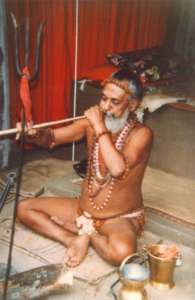 Soon after that, on 23rd September, Swami Satyananda came here to live in seclusion and to lead the life of a Paramahansa. The Rikhia, which Swami Satyananda entered in 1989, was still living in the 16th century. There were no roads, no electricity, no telephones, newspapers, television, and shops. Absolutely no trace of the 21st century had entered here. It was barren and desolate no doubt, but its vibrations were pure and spiritual providing an ideal climate for the seclusion which he imposed on himself in order to begin the sadhanas, spiritual practices, which he had been directed to perform. Here he performed the most difficult tapasya,
Soon after that, on 23rd September, Swami Satyananda came here to live in seclusion and to lead the life of a Paramahansa. The Rikhia, which Swami Satyananda entered in 1989, was still living in the 16th century. There were no roads, no electricity, no telephones, newspapers, television, and shops. Absolutely no trace of the 21st century had entered here. It was barren and desolate no doubt, but its vibrations were pure and spiritual providing an ideal climate for the seclusion which he imposed on himself in order to begin the sadhanas, spiritual practices, which he had been directed to perform. Here he performed the most difficult tapasya,
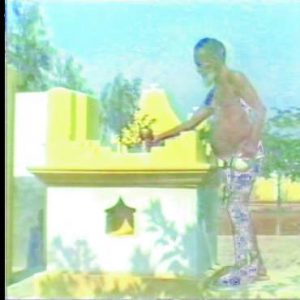 For twenty years he remained in isolation, constantly performing higher spiritual sadhanas. He entered the lifestyle of paramahansas who do not work for their disciples and mission alone, but have a universal vision. Thus, Swami Satyananda has paved the way for future paramahansas to uphold their tradition.With the sankalpa of peace, plenty and prosperity for all Swami Satyananda continued to perform higher Vedic sadhanas until he attained Mahasamadhi in 2009, thus inspiring sannyasins and householders in their spiritual journey to develop a universal vision and thus live a divine life
For twenty years he remained in isolation, constantly performing higher spiritual sadhanas. He entered the lifestyle of paramahansas who do not work for their disciples and mission alone, but have a universal vision. Thus, Swami Satyananda has paved the way for future paramahansas to uphold their tradition.With the sankalpa of peace, plenty and prosperity for all Swami Satyananda continued to perform higher Vedic sadhanas until he attained Mahasamadhi in 2009, thus inspiring sannyasins and householders in their spiritual journey to develop a universal vision and thus live a divine life
Panchagni – Sadhana of five fires
The panchagni fire lit by Sri Swamiji is still burning at Rikhiapeeth and is worshipped daily by sannyasins at sunrise and sunset with aromatic herbs amidst the chanting of Vedic mantras. The intense sadhana of panchagni performed by Swami Satyananda has forged a very powerful tradition here in Rikhiapeeth with the performance of havans. 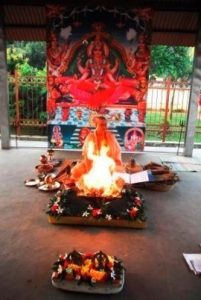 In keeping with this tradition havans are regularly conducted at Rikhiapeeth. Regular performance of havans over time builds up immense spiritual energy and divine vibrations, as with each consecutive fire ceremony the effects become more profound. Havans purify at the individual level (physically, mentally, psychologically and spiritually) and also purify and revere the whole environment at a cosmic level (earth, water, fire, air, ether). In order to restore the damage that is done by the follies of the human race, we have to return to the source of Nature in its primordial purity and awaken its benevolence and grace. That is the only power that can save us, for Nature has within itself the ability to restore, rejuvenate and recharge itself. Through havan we can placate and worship the cosmic forces that sustain our lives.
In keeping with this tradition havans are regularly conducted at Rikhiapeeth. Regular performance of havans over time builds up immense spiritual energy and divine vibrations, as with each consecutive fire ceremony the effects become more profound. Havans purify at the individual level (physically, mentally, psychologically and spiritually) and also purify and revere the whole environment at a cosmic level (earth, water, fire, air, ether). In order to restore the damage that is done by the follies of the human race, we have to return to the source of Nature in its primordial purity and awaken its benevolence and grace. That is the only power that can save us, for Nature has within itself the ability to restore, rejuvenate and recharge itself. Through havan we can placate and worship the cosmic forces that sustain our lives.
During the period of tapasya (spiritual sadhana) Swami Satyananda also held the Raj Sooya Yajna at Rikhiapeeth from 1995 to 2007 for a period for a period of twelve years. Panchagni sadhana, the five fires worship, was performed in total isolation whereas the Rajasooya Yajna was performed with the participation and involvement of hundreds of thousands of people who received infinite blessings. Spiritual seekers, aspirants, devotees and well-wishers came from every corner of the globe to experience the divine and spiritual vibrations that emanated from this historic yajna and to partake in the most profound and relevant spiritual teachings available today.
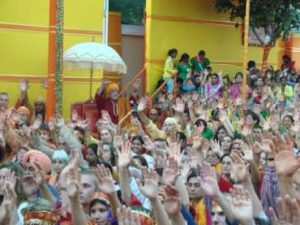 For twelve years Swami Satyananda expounded his enlightened understanding of Swami Sivananda’s teachings to millions. Through his example, he showed that service to humanity is the beginning of spiritual life and is essential for all aspirants who seek personal growth, development and evolution. He established bhakti or faith and pure love as the most important need of this century and declared it to be the ‘science of life’ which can re-establish healthy and balanced individuals and society. A constant feature and speciality of the Rajasooya Yajna was perfection in the art of giving. When Rajasooya Yajna is conducted by an enlightened being such as Swami Satyananda, it is not merely the grand scale material giving that is a highlight but the giving of spiritual wealth, knowledge and inspiration which permeated throughout the world.
For twelve years Swami Satyananda expounded his enlightened understanding of Swami Sivananda’s teachings to millions. Through his example, he showed that service to humanity is the beginning of spiritual life and is essential for all aspirants who seek personal growth, development and evolution. He established bhakti or faith and pure love as the most important need of this century and declared it to be the ‘science of life’ which can re-establish healthy and balanced individuals and society. A constant feature and speciality of the Rajasooya Yajna was perfection in the art of giving. When Rajasooya Yajna is conducted by an enlightened being such as Swami Satyananda, it is not merely the grand scale material giving that is a highlight but the giving of spiritual wealth, knowledge and inspiration which permeated throughout the world.
Upholding the Sankalpa
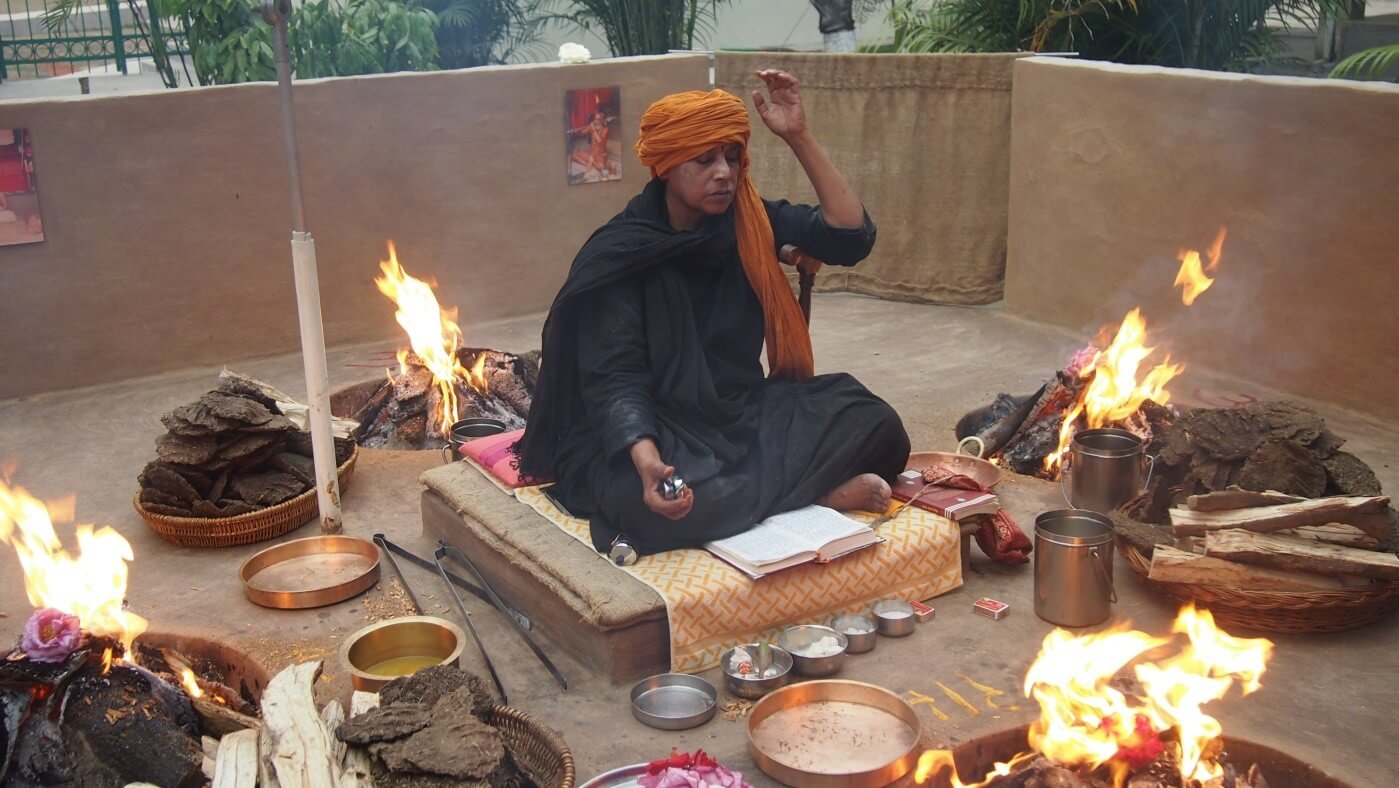
About her sadhana, Swami Satyasangananda has said, “I did panchagni only to continue and maintain a tradition. In this way, I am expressing my love for my beloved, through the medium of panchagni, which is the tradition Gurudev Paramahansa Satyananda started here”.
Vajapeya Yajna
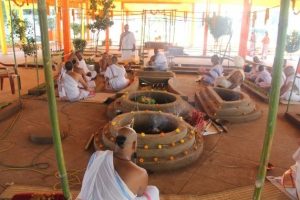 During panchagni sadhana Swami Satyasangananda received a divine mandate and heard the voice of her Guru Swami Satyananda instructing her to “perform Soma Vajapeya”. Following this command, after the culmination of panchagni sadhana, she undertook the historic Vajapaya Yajna at Rikhiapeeth.
Vajapeya literally means food and water and its effect is diverse, long-lasting and percolates to all the aspects of creation – living and non-living, visible as well as invisible. This yajna has a powerful effect on the soil, water, air, and also the hearts and minds of people. The effect of this yajna extends over hundreds of kilometres and lasts for many years. It is the highest yajna that can be performed by a sannyasin.
During panchagni sadhana Swami Satyasangananda received a divine mandate and heard the voice of her Guru Swami Satyananda instructing her to “perform Soma Vajapeya”. Following this command, after the culmination of panchagni sadhana, she undertook the historic Vajapaya Yajna at Rikhiapeeth.
Vajapeya literally means food and water and its effect is diverse, long-lasting and percolates to all the aspects of creation – living and non-living, visible as well as invisible. This yajna has a powerful effect on the soil, water, air, and also the hearts and minds of people. The effect of this yajna extends over hundreds of kilometres and lasts for many years. It is the highest yajna that can be performed by a sannyasin.  Yajna is a complete process, not only at a personal or social level but also at an ecological level. In ancient days yajnas were performed for two reasons: to purify the cosmic planetary atmosphere and also to purify the internal individual atmosphere. The science of yajna purifies the physical atmosphere and it also purifies the akashic or subtle atmosphere, the atmosphere which influences your mind. Swami Satyananda said, “Yajnas should transcend religious and geographical barriers and become one of the most powerful means of ecological balance”.
Yajna is a complete process, not only at a personal or social level but also at an ecological level. In ancient days yajnas were performed for two reasons: to purify the cosmic planetary atmosphere and also to purify the internal individual atmosphere. The science of yajna purifies the physical atmosphere and it also purifies the akashic or subtle atmosphere, the atmosphere which influences your mind. Swami Satyananda said, “Yajnas should transcend religious and geographical barriers and become one of the most powerful means of ecological balance”.
By conducting the most ancient Vajapeya Yajna at Rikhiapeeth, Peethadhishwari Swami Satyasangananda has exalted the tradition of yajna that Swami Satyananda established, as this yajna forms part of mahayajna, a tradition along with Raja Sooya and Ashvamedha yajna.
The sankalpa of the Vajapeya Yajna is for the welfare of the public at large and is not individual or personal. The Vajapeya Yajna at Rikhiapeeth was performed for continued unfoldment of Swami Satyananda’s sankalpa of peace, plenty and prosperity which he awakened here. This powerful sankalpa continues to bring upliftment, hope, opportunity and development into the lives of those living in the villages surrounding Rikhiapeeth, as well as having benefits for the whole of humankind.
Travel Guide
By Air:
Closest international airport is Kolkata (approx 5 hours by train from Rikhiapeeth). There are daily international flights into New Delhi and Kolkata.
Closest domestic airport is Patna (approx 4 hours by train from Rikhiapeeth)
By Train:
By Rail to Jasidih
The nearest railway station is Jasidih (10 kms from Deoghar) which is on the Howrah (Kolkata) – Patna – Delhi line.
The following train times are subject to change and travellers should confirm all times with India Rail or your local travel agent prior to travel.
From Delhi/Patna <> Kolkata. The following trains stop at Jasidih Junction.
Kolkata to Jasidih Junction
| Train No. | Train Name | Arrival |
|---|---|---|
| 12303 | Howrah New Delhi Poorva Express | 12.08 |
| 12305 | Howrah New Delhi Rajdhani Express | 17.4 |
| 12023 | Howrah Patna Jan Shatabdi Express | 18.22 |
New Delhi to Jasidih Junction
| Train No. | Train Name | Arrival |
|---|---|---|
| 12304 | New Delhi Howrah Poorva Express | 11.44 |
| 12306 | New Delhi Howrah Rajdhani Express | 8.1 |
| 12274 | New Delhi Howrah Junction Duronto Exp | 5.06 |
Patna to Jasidih Junction
| Train No. | Train Name | Arrival |
|---|---|---|
| 12024 | Patna Howrah Jan Shatabdi Express | 8.56 |
Visit the Indian Railways website for up to date train schedules: Indian railways official website
Jharkhand Home of the Rishis
 Jharkhand, a relatively newly formed state in north-east India, is rich in nature’s bounty. It contains the Santhal Parganas which have been the traditional lands and forests inhabited by the Santhalis since ancient times.Santhalis are one of the major and most ancient tribes of India. They thrived in the abundant forests of ancient Jharkhand and have preserved their unique culture and way of life over the centuries. The Santhalis continue to follow their traditional religion and social laws which is devoid of any caste system. They are skilled, honest, hardworking, and independent and continue to live in harmony with nature as they have done for thousands of years.Jharkhand was once covered by dense jungles which were inhabited by rishis, realized sages, who came there to perform tapasya, austerities,and sadhana, spiritual practices, because of the isolation, suitability and serenity of the place. During this deep mythological past which we now may refer to as the age of enlightenment the Vedas and Puranas were recorded and committed to written manuscripts. Rikhia, a tiny village located within the Santhal Parganas of Jharkhand preserves the memory of that time and derives its name from the Sanskrit word rishiya – the land of the Rishis.
Jharkhand, a relatively newly formed state in north-east India, is rich in nature’s bounty. It contains the Santhal Parganas which have been the traditional lands and forests inhabited by the Santhalis since ancient times.Santhalis are one of the major and most ancient tribes of India. They thrived in the abundant forests of ancient Jharkhand and have preserved their unique culture and way of life over the centuries. The Santhalis continue to follow their traditional religion and social laws which is devoid of any caste system. They are skilled, honest, hardworking, and independent and continue to live in harmony with nature as they have done for thousands of years.Jharkhand was once covered by dense jungles which were inhabited by rishis, realized sages, who came there to perform tapasya, austerities,and sadhana, spiritual practices, because of the isolation, suitability and serenity of the place. During this deep mythological past which we now may refer to as the age of enlightenment the Vedas and Puranas were recorded and committed to written manuscripts. Rikhia, a tiny village located within the Santhal Parganas of Jharkhand preserves the memory of that time and derives its name from the Sanskrit word rishiya – the land of the Rishis.
Deoghar The abode of Shiva and Shakti
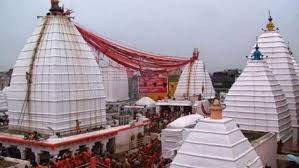 In close vicinity to Rikhiapeeth is the temple town of Deoghar, which literally means ‘home of the Gods’. The main temple enshrines Baba Baidyanath, the jyotirlingam, oval shaped stone, which is worshipped as a symbol of the illumined consciousness of Lord Shiva. It is naturally formed out of a single rock and its magnificence and power draws hundreds of thousands of devotees. Narad Muni in his description of Baidyanath Dham to Hanuman describes it as the only place where Lord Shiva grants boons to each and every person whether deserving or undeserving, sinner or saint.A feature of Deoghar is the annual kanwariya mela, festival, held in the month of Sravan (July/August), in worship of Baba Baidyanath. This is an auspicious time for bathing the jyotirlingam with Ganga water and millions of devotees, rich and poor alike, walk barefoot 104 kilometers from Sultanganj carrying Ganga water in their kanwars or earthen pots. At that time Deoghar resounds with the auspicious mantra Om Namah Shivaya, and the presence of Shiva becomes intense.
In close vicinity to Rikhiapeeth is the temple town of Deoghar, which literally means ‘home of the Gods’. The main temple enshrines Baba Baidyanath, the jyotirlingam, oval shaped stone, which is worshipped as a symbol of the illumined consciousness of Lord Shiva. It is naturally formed out of a single rock and its magnificence and power draws hundreds of thousands of devotees. Narad Muni in his description of Baidyanath Dham to Hanuman describes it as the only place where Lord Shiva grants boons to each and every person whether deserving or undeserving, sinner or saint.A feature of Deoghar is the annual kanwariya mela, festival, held in the month of Sravan (July/August), in worship of Baba Baidyanath. This is an auspicious time for bathing the jyotirlingam with Ganga water and millions of devotees, rich and poor alike, walk barefoot 104 kilometers from Sultanganj carrying Ganga water in their kanwars or earthen pots. At that time Deoghar resounds with the auspicious mantra Om Namah Shivaya, and the presence of Shiva becomes intense.
 Deoghar is also a very important shaktipeeth, spiritual place where the cosmic mother is worshipped. It is said that when Lord Shiva was carrying the dead body of his consort Sati, it was cut into sixty-four pieces, and different parts of Sati’s body fell in the sixty-four peethas, important places for worship of Shakti. Her heart fell at Baidyanath Dham and thus it is known as the Hridaya Peeth or place of the heart. Swami Satyananda said, “Deoghar is the cremation ground of Devi, the place where her heart fell millions of years ago. It is also the birthplace of a new Devi. The message for the awakening of women will go out from here.”Deoghar is an important seat of both Shiva and Shakti for they are both eternally present here and their influence is all pervading.
Deoghar is also a very important shaktipeeth, spiritual place where the cosmic mother is worshipped. It is said that when Lord Shiva was carrying the dead body of his consort Sati, it was cut into sixty-four pieces, and different parts of Sati’s body fell in the sixty-four peethas, important places for worship of Shakti. Her heart fell at Baidyanath Dham and thus it is known as the Hridaya Peeth or place of the heart. Swami Satyananda said, “Deoghar is the cremation ground of Devi, the place where her heart fell millions of years ago. It is also the birthplace of a new Devi. The message for the awakening of women will go out from here.”Deoghar is an important seat of both Shiva and Shakti for they are both eternally present here and their influence is all pervading.
“Baba Baidyanath is an awakened shrine where the devotee’s pleas are heard immediately and never go unanswered.” Swami Satyananda
Office Hours
8:00 AM to 11:00 AM
2:00 PM to 5:00PM
Useful Link
Address
Rikhiapeeth P.O. Rikhia Dist. Deoghar, Jharkhand, 814113 India.
Tel: +91 9102699831

